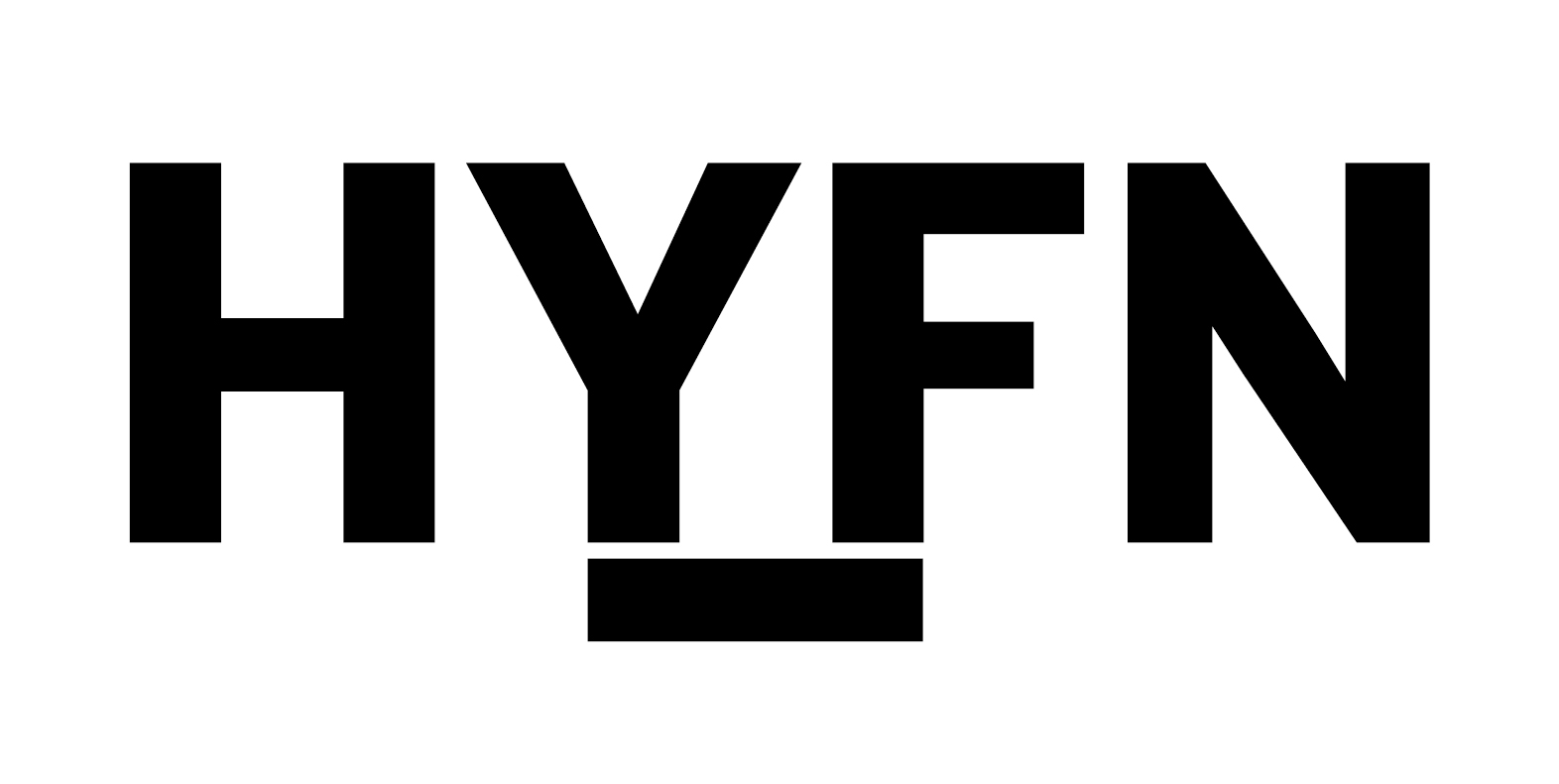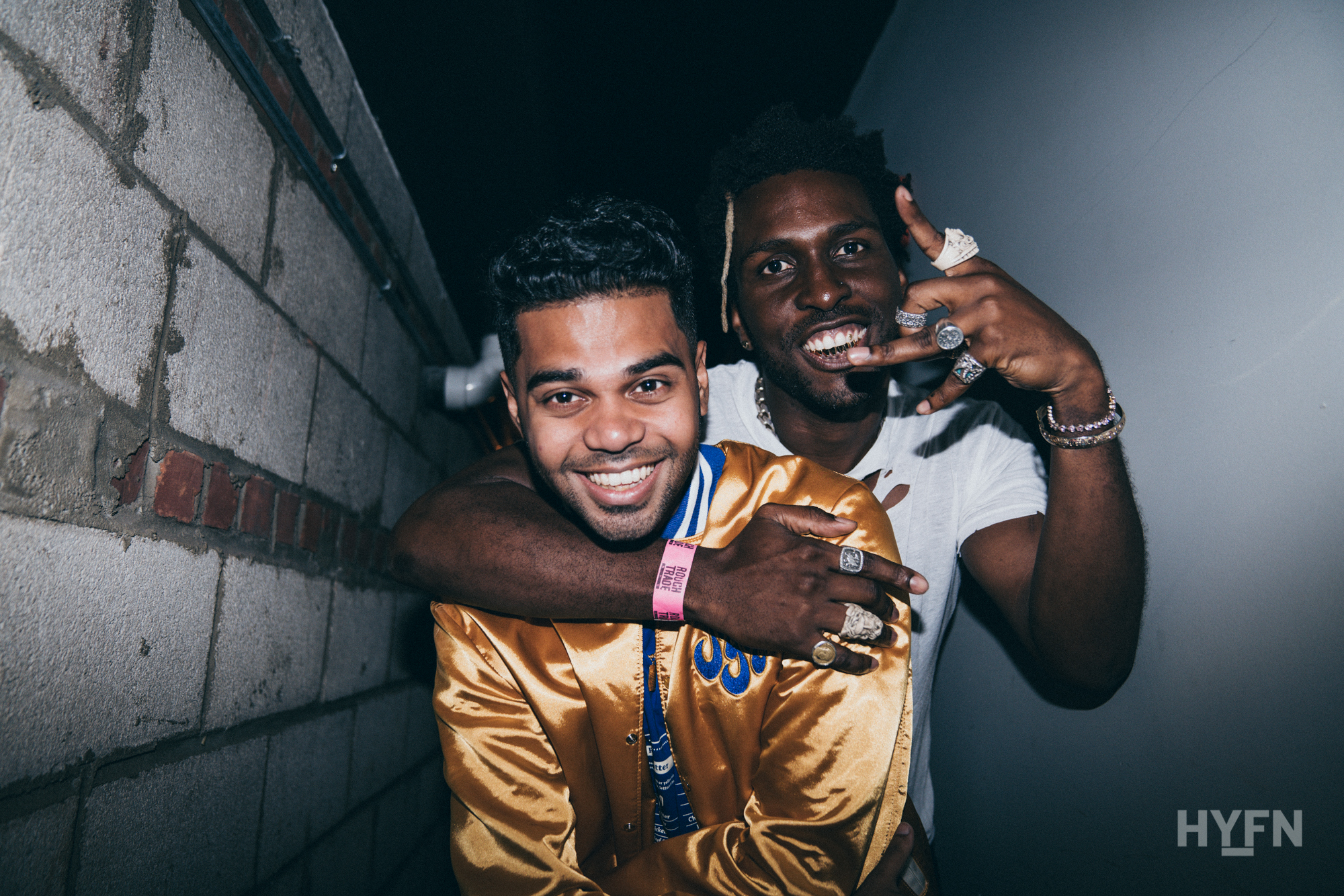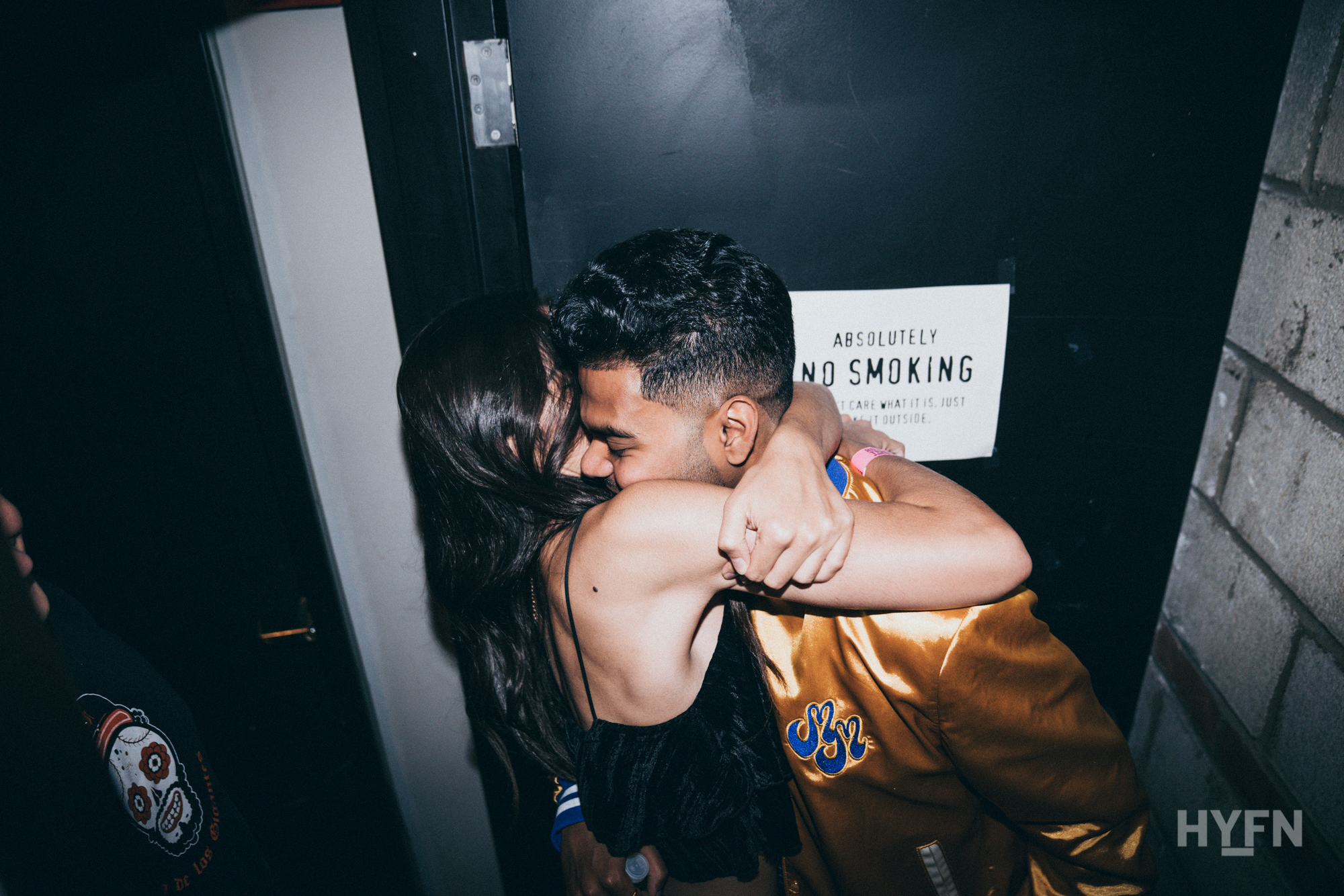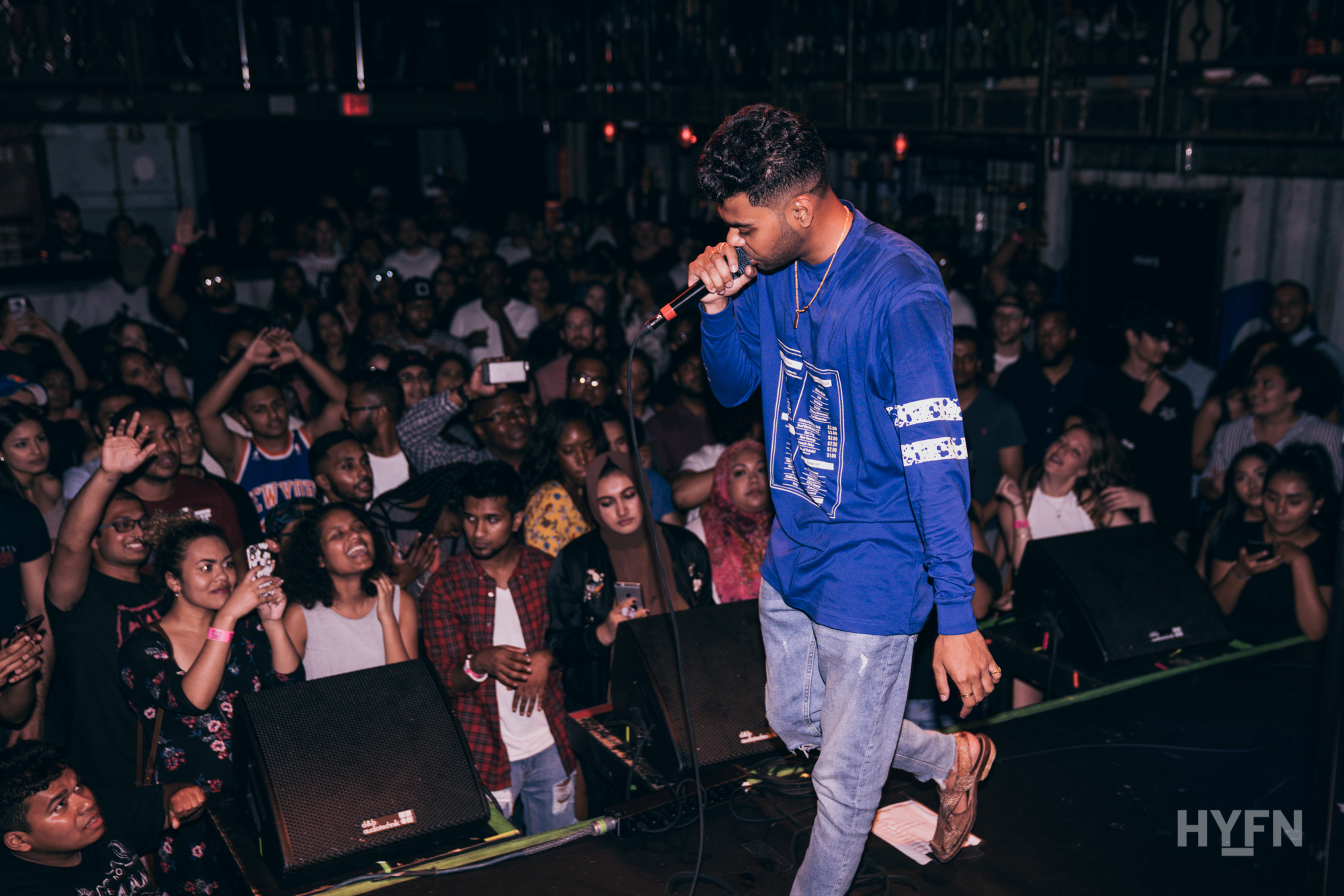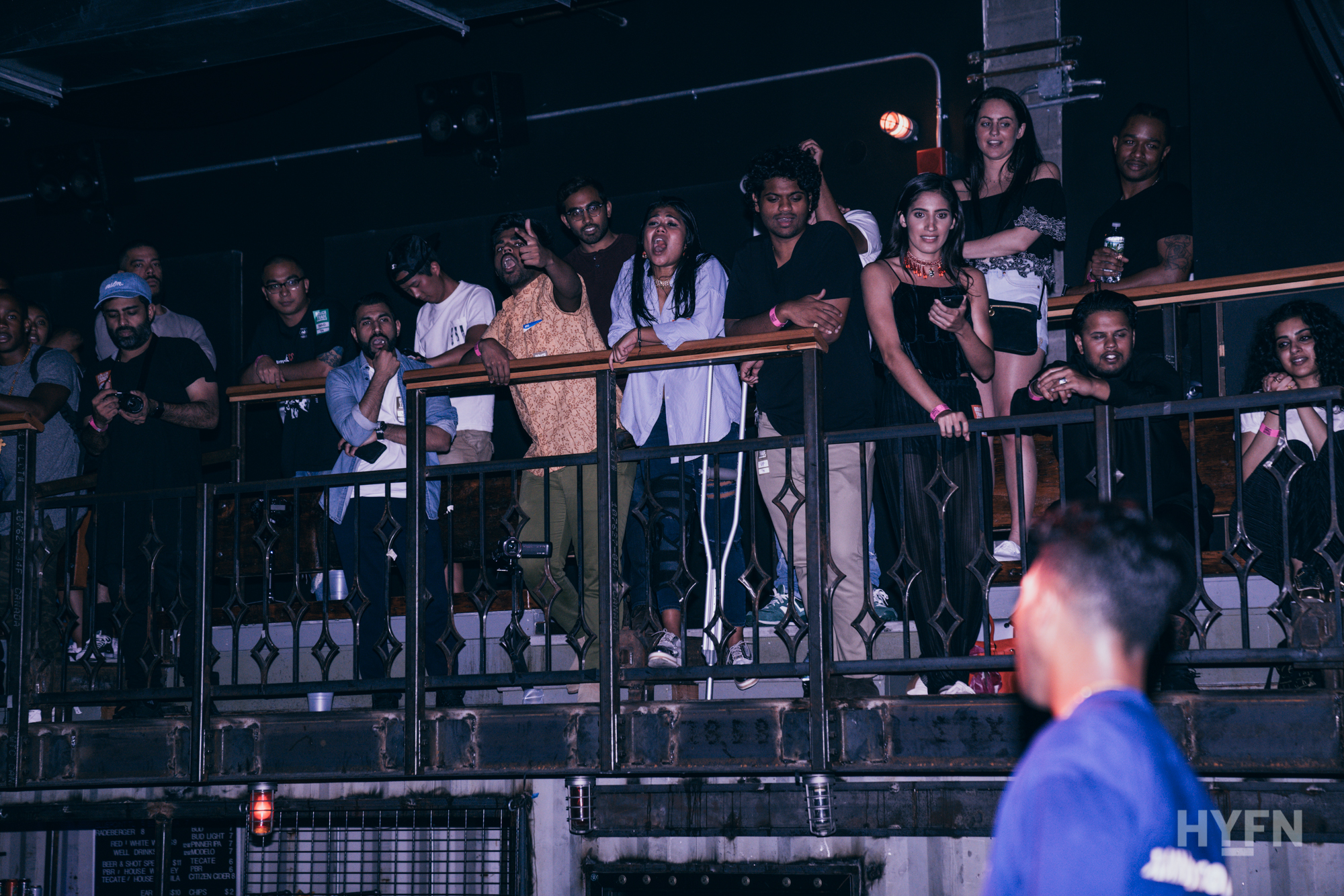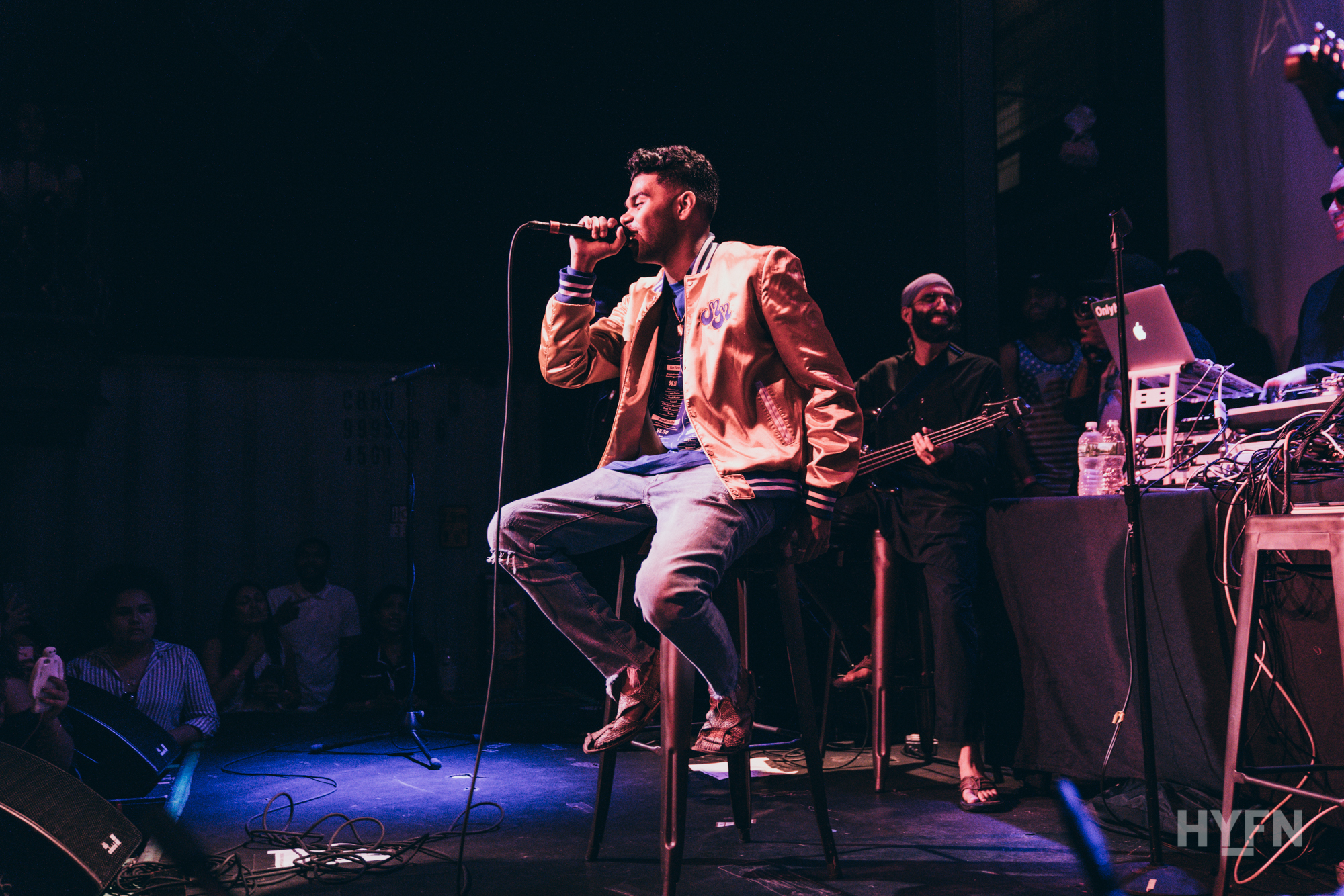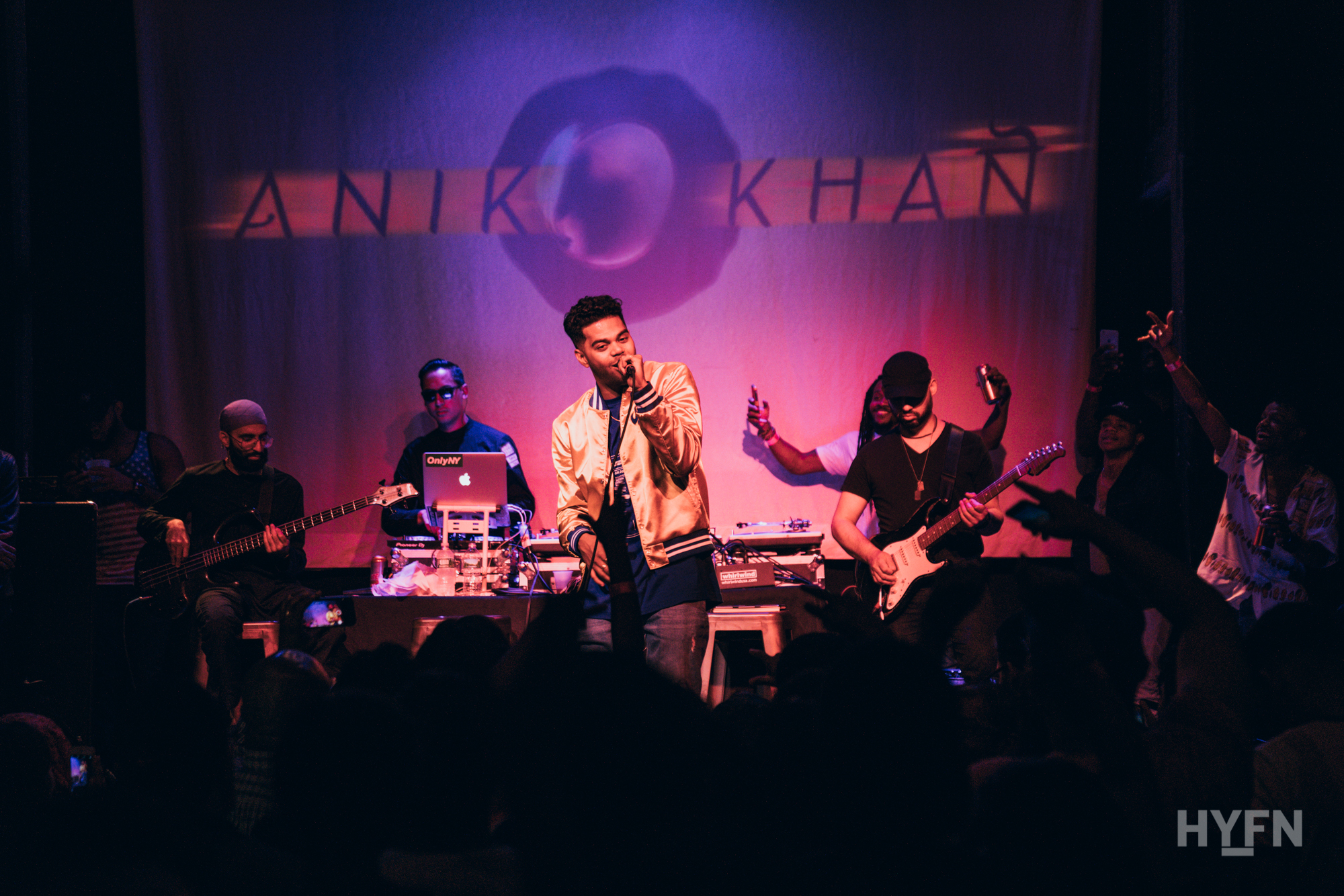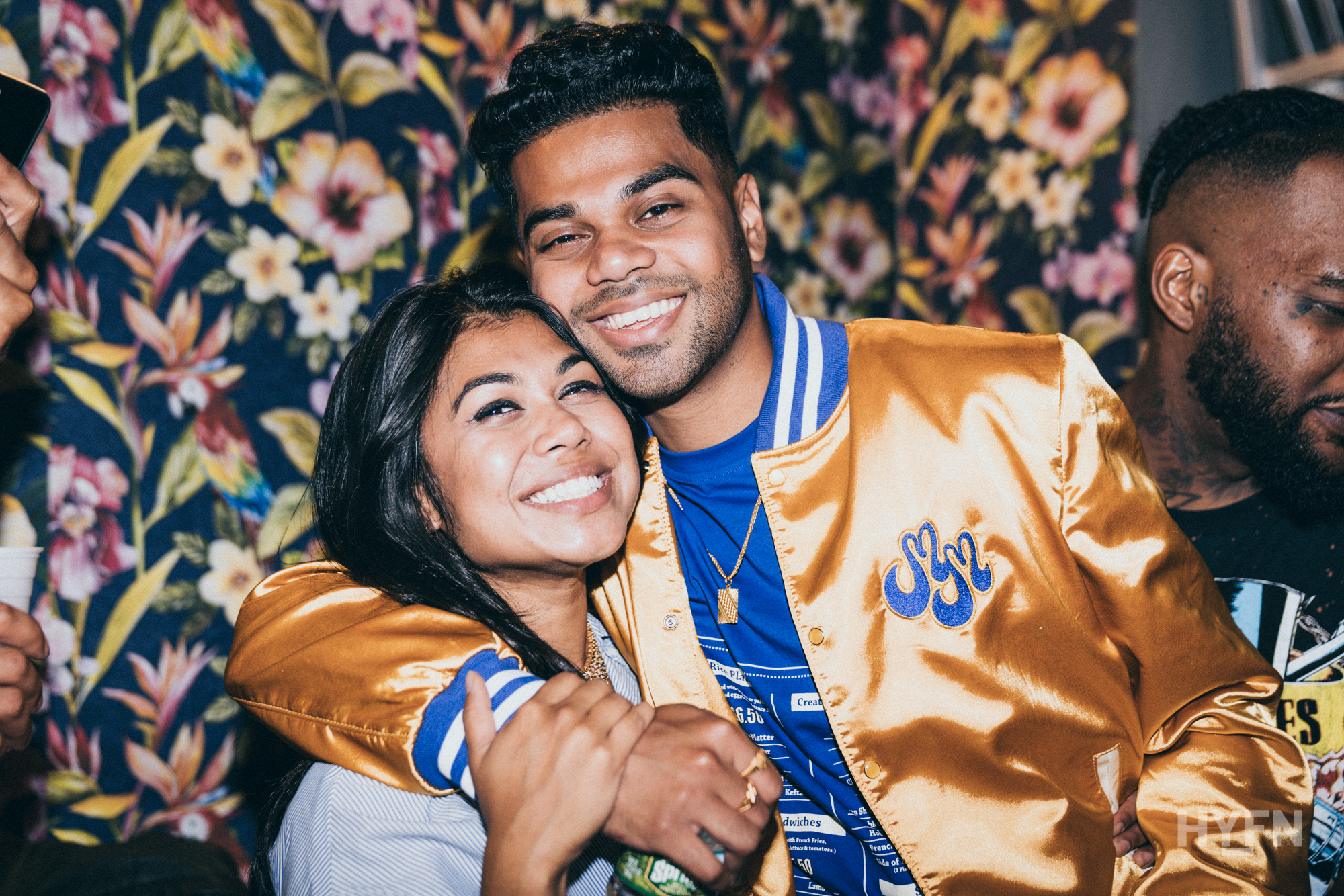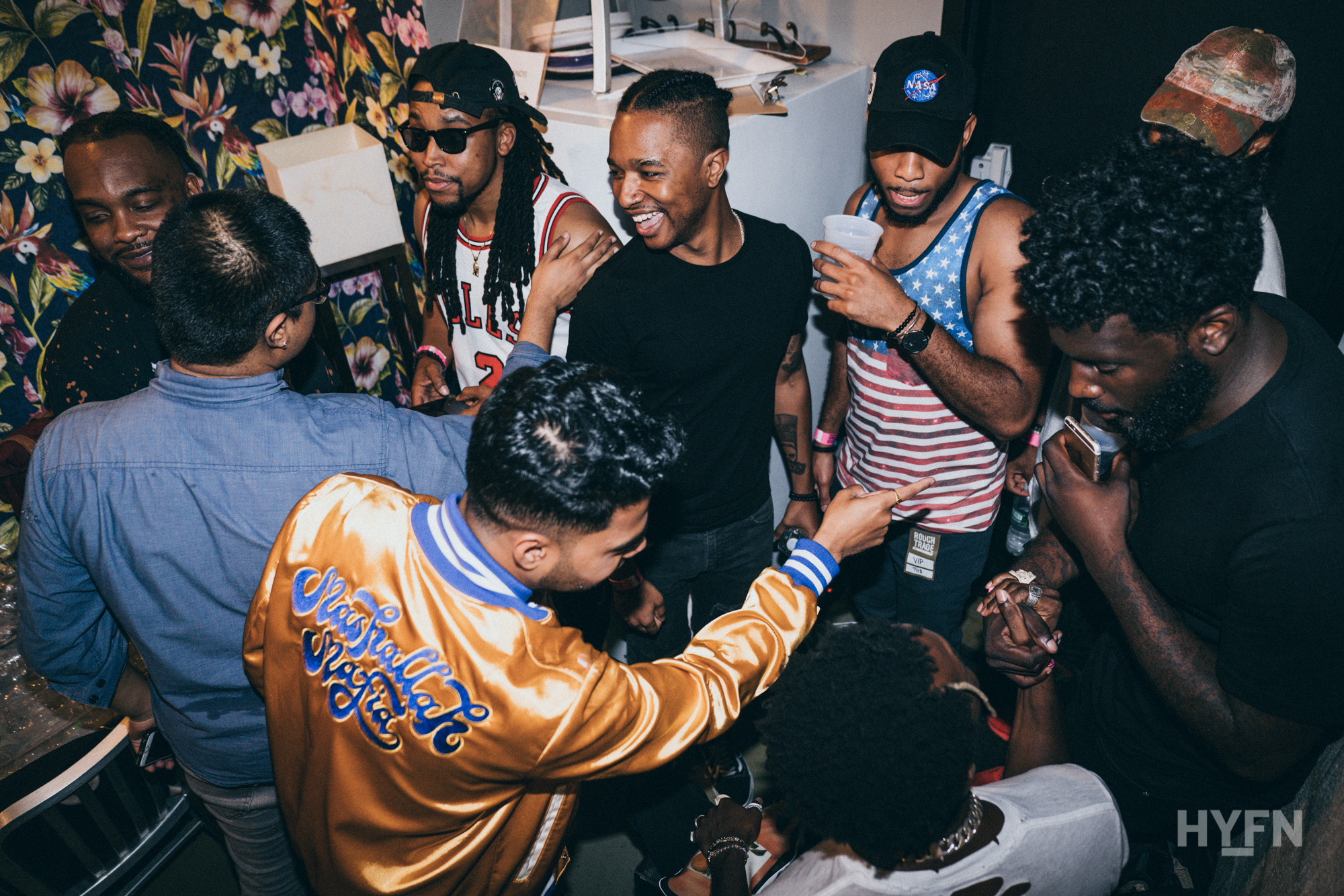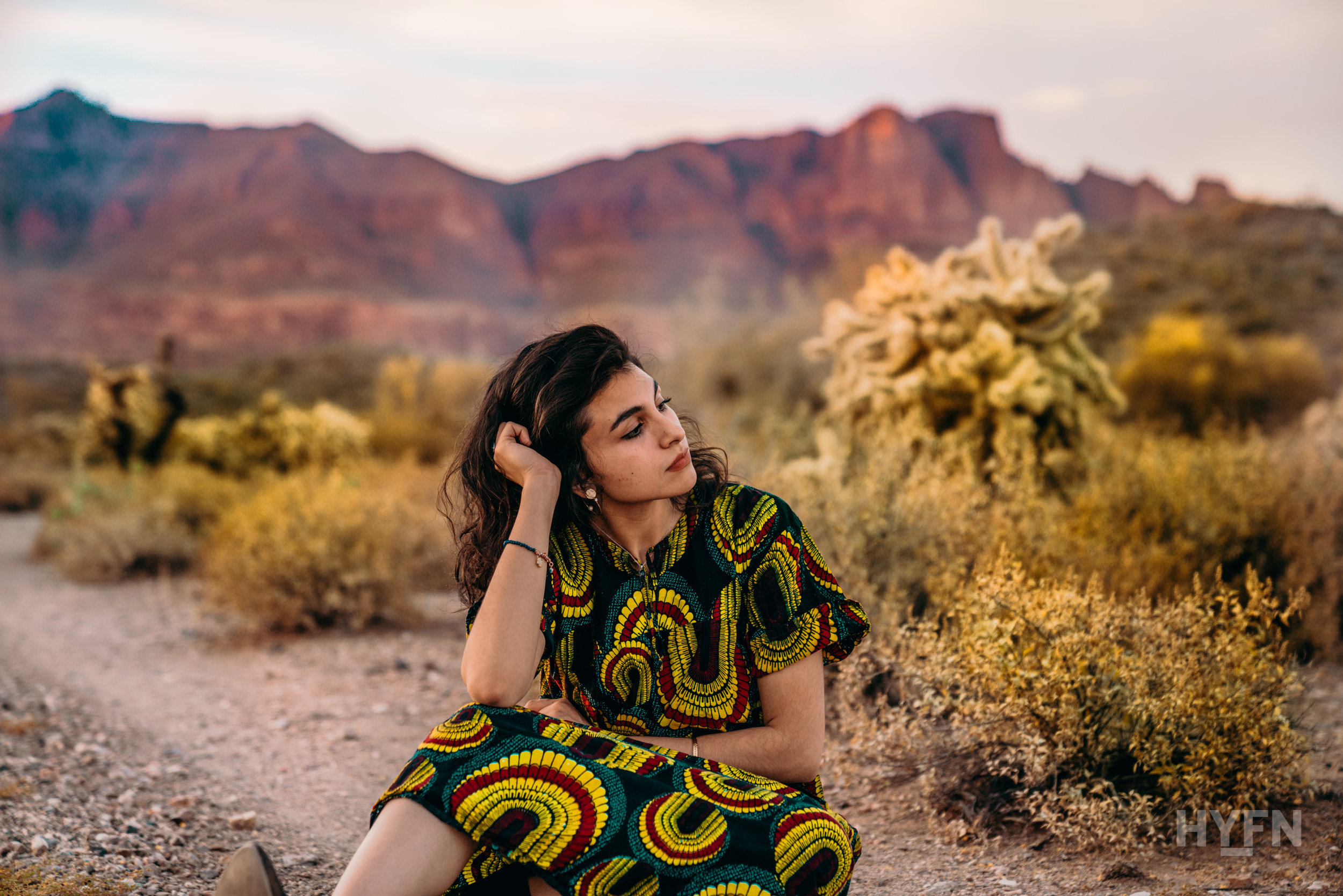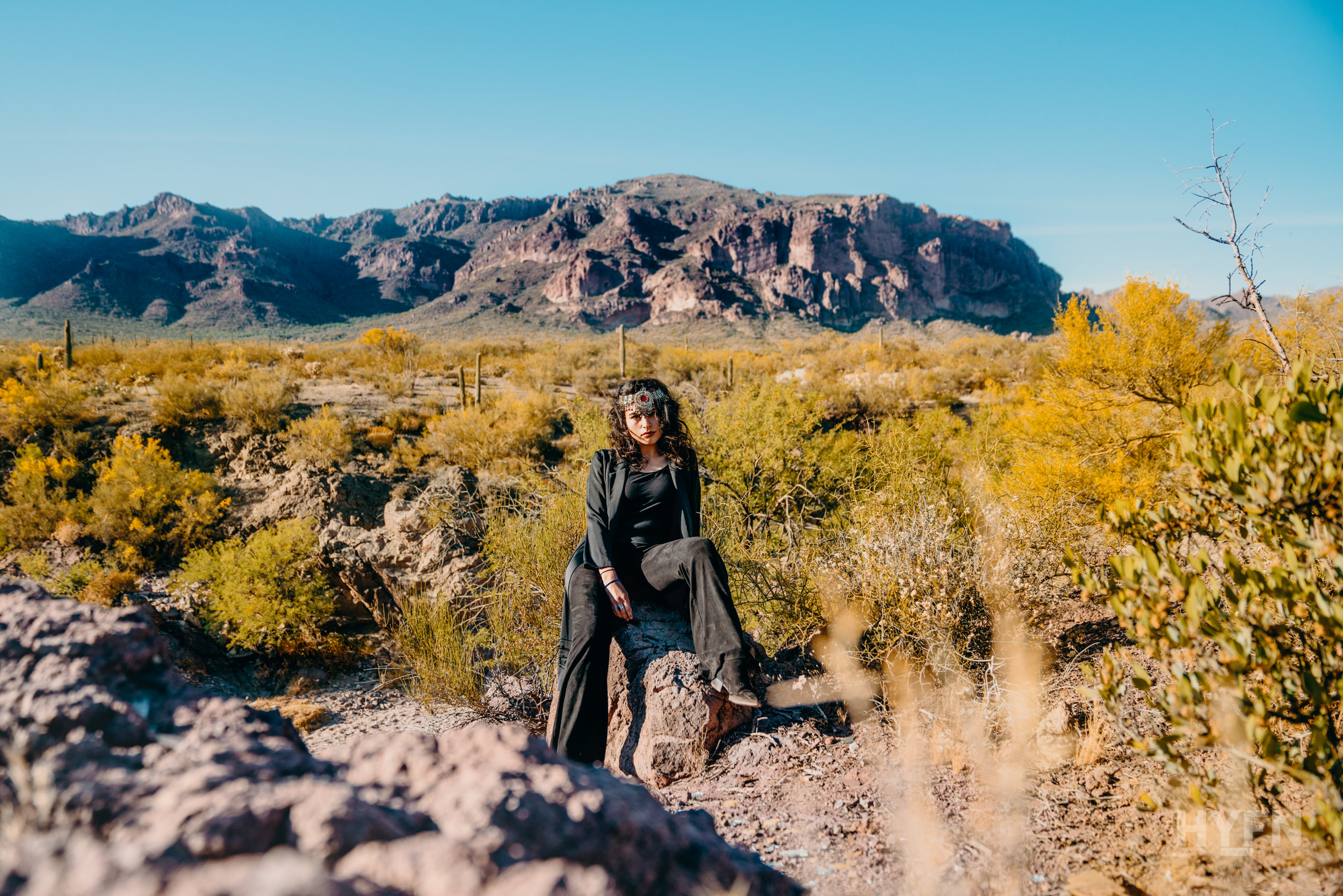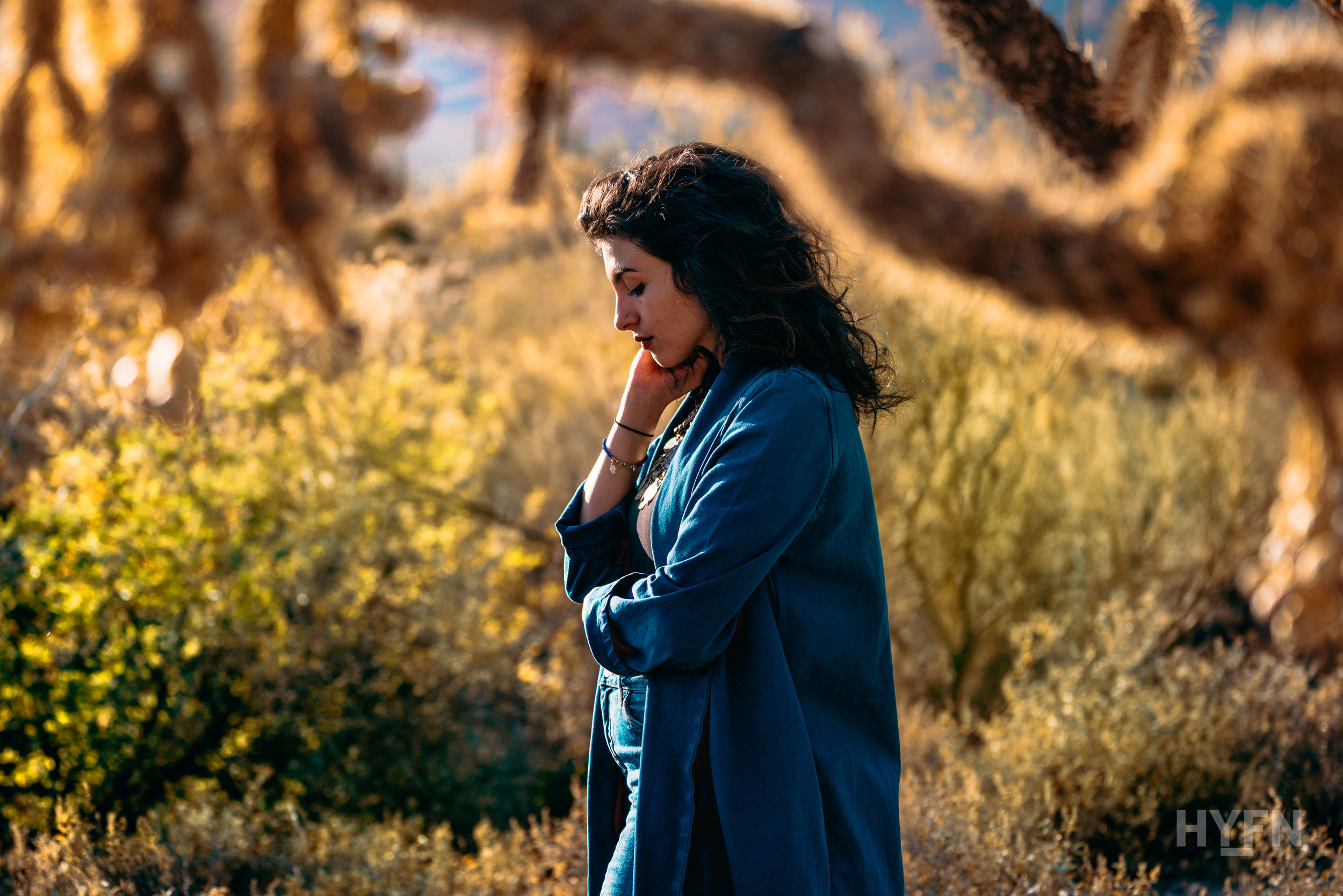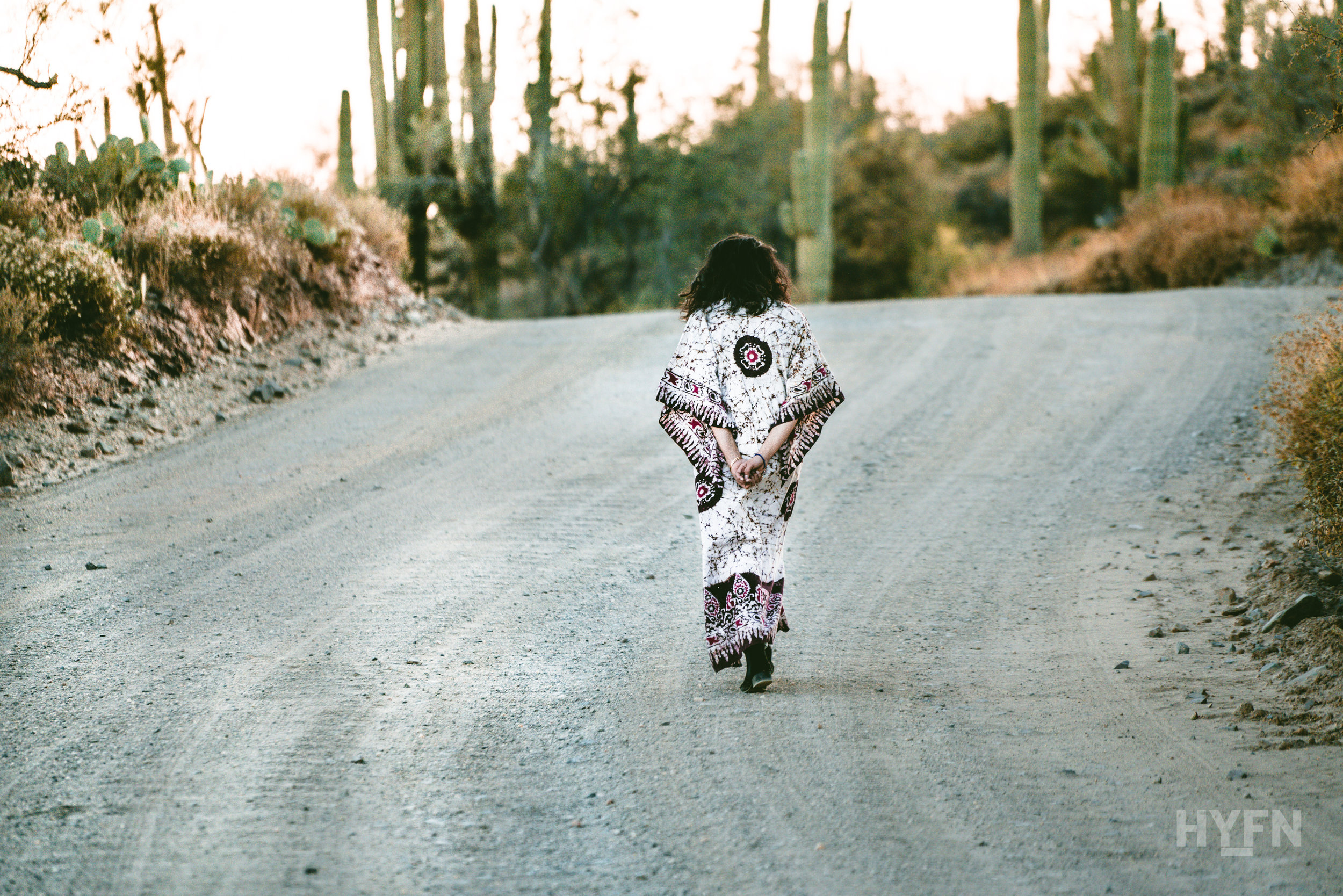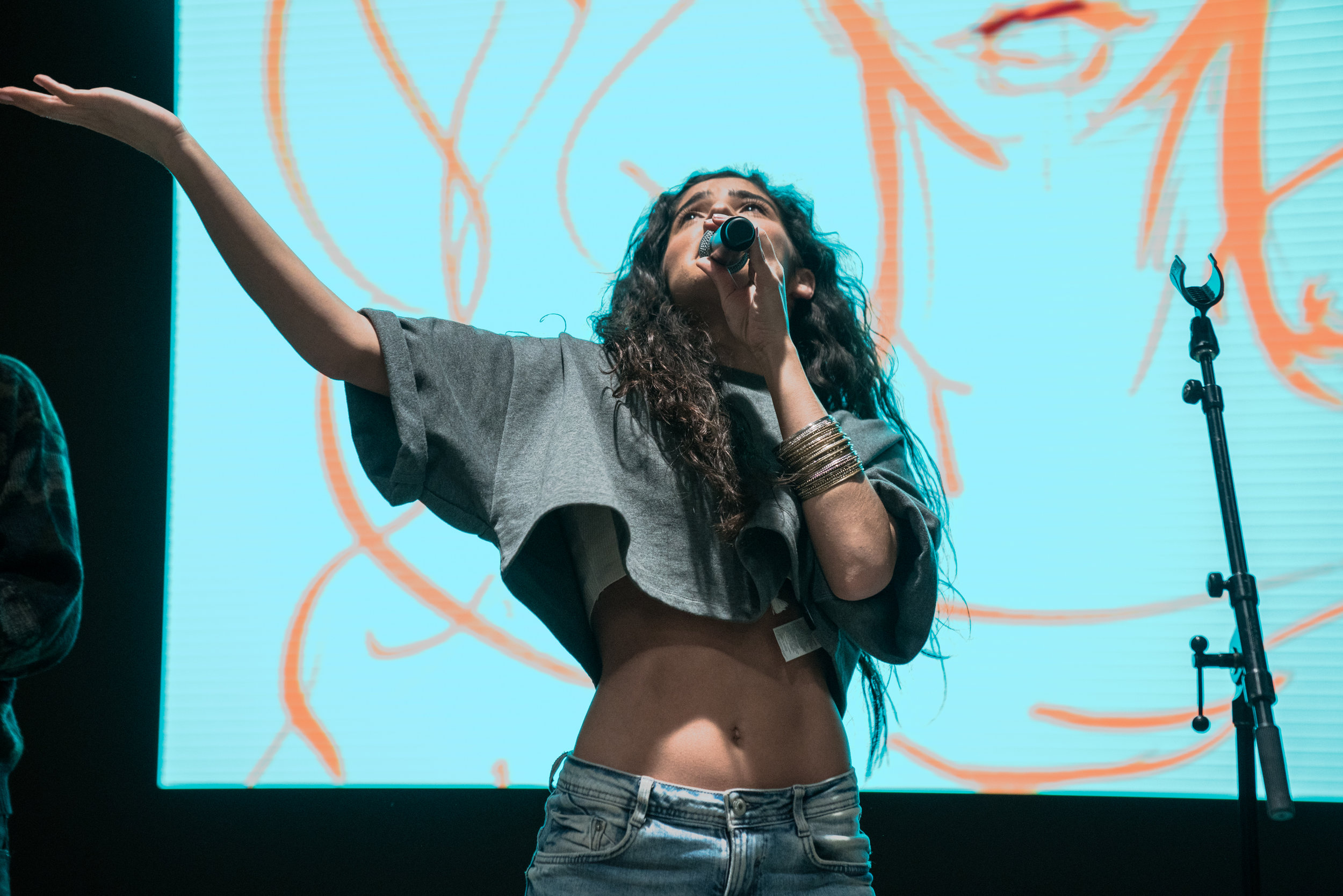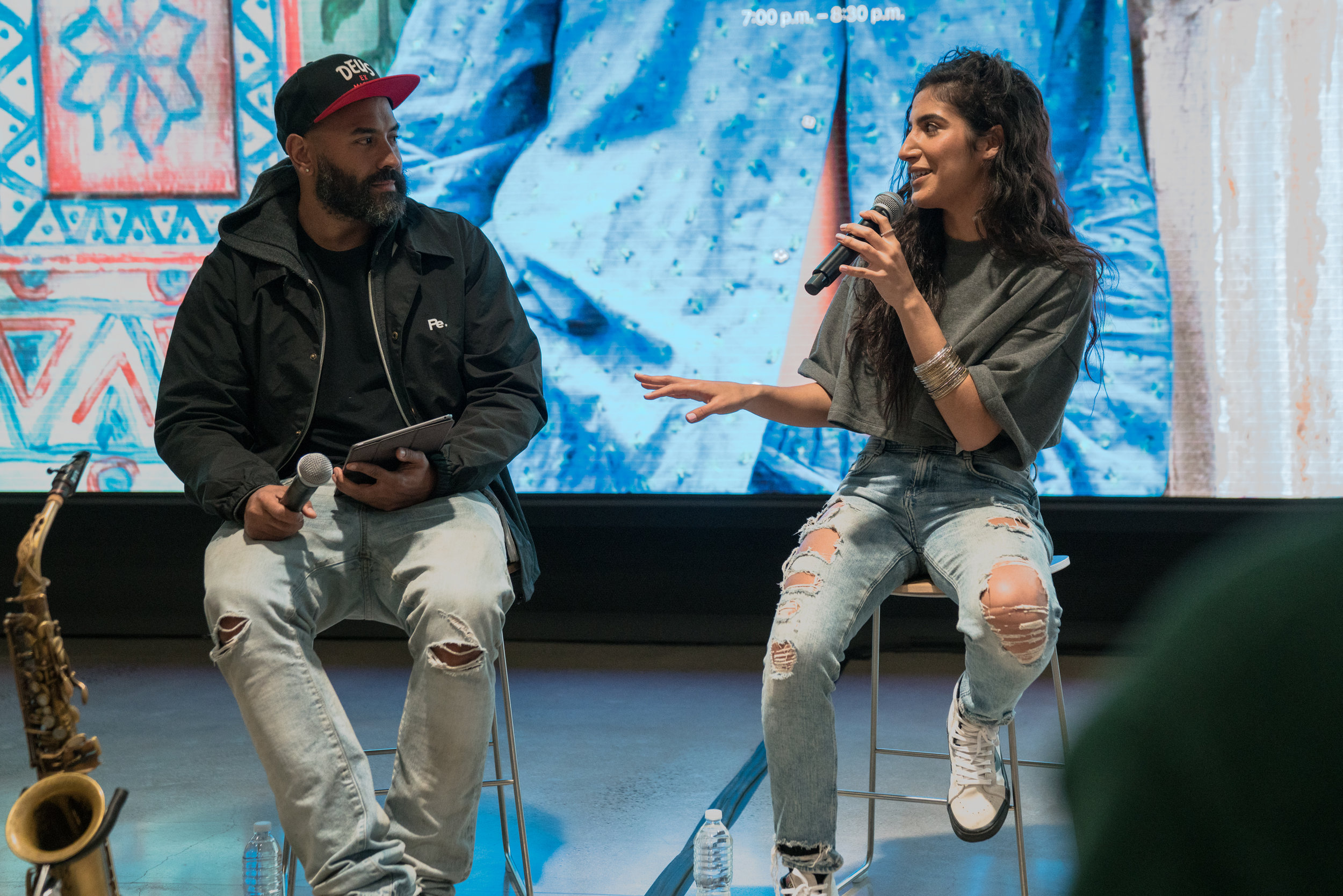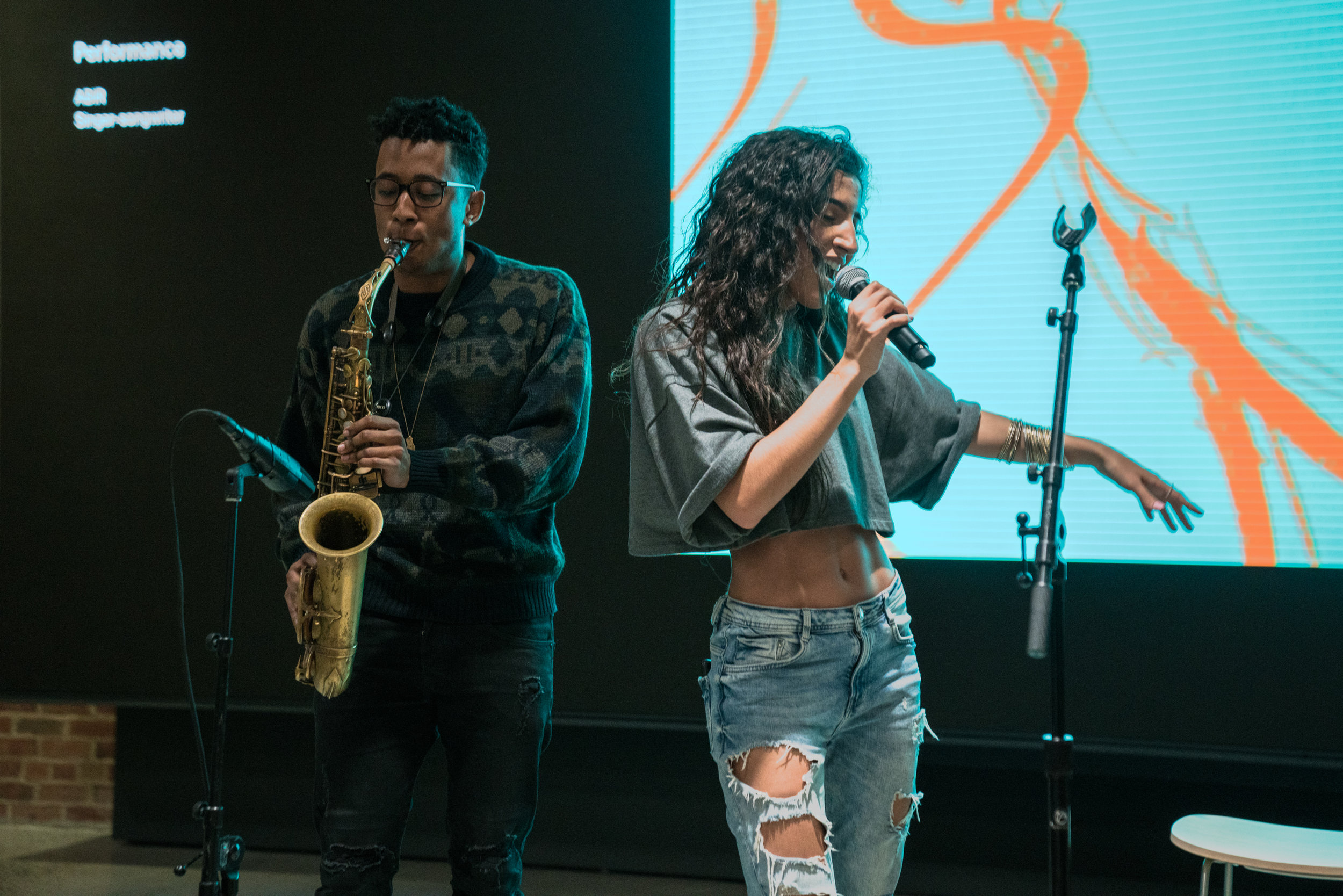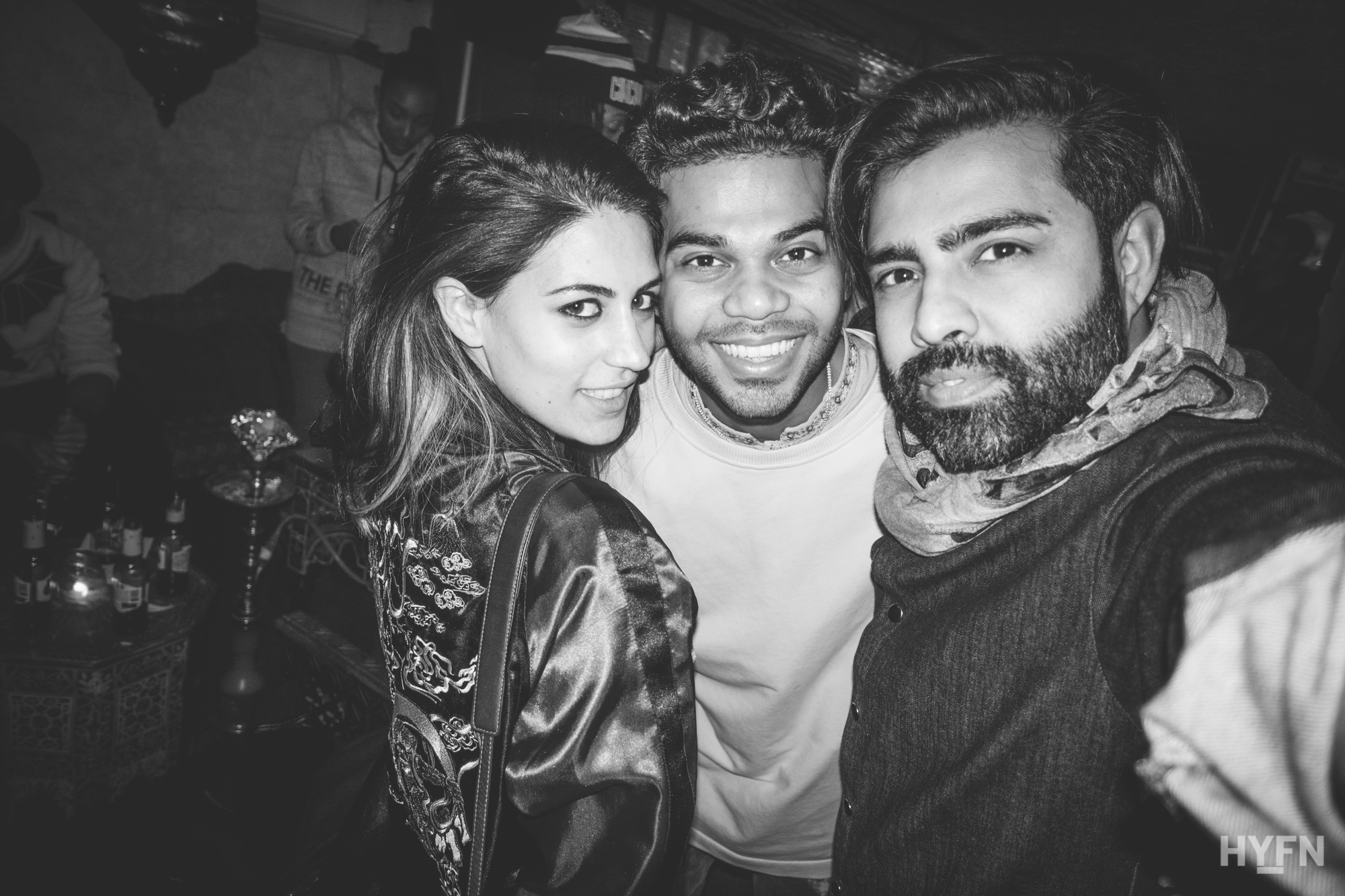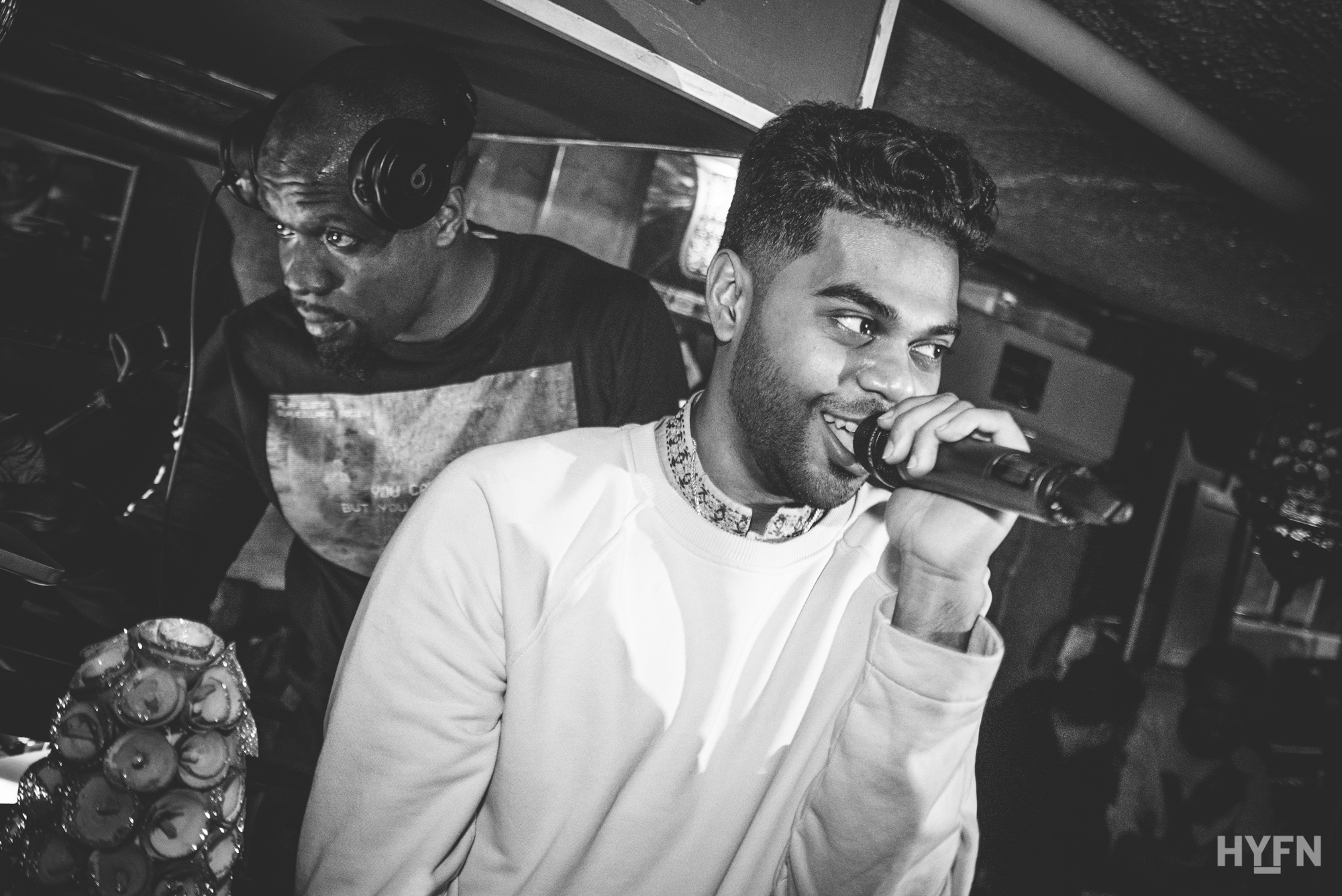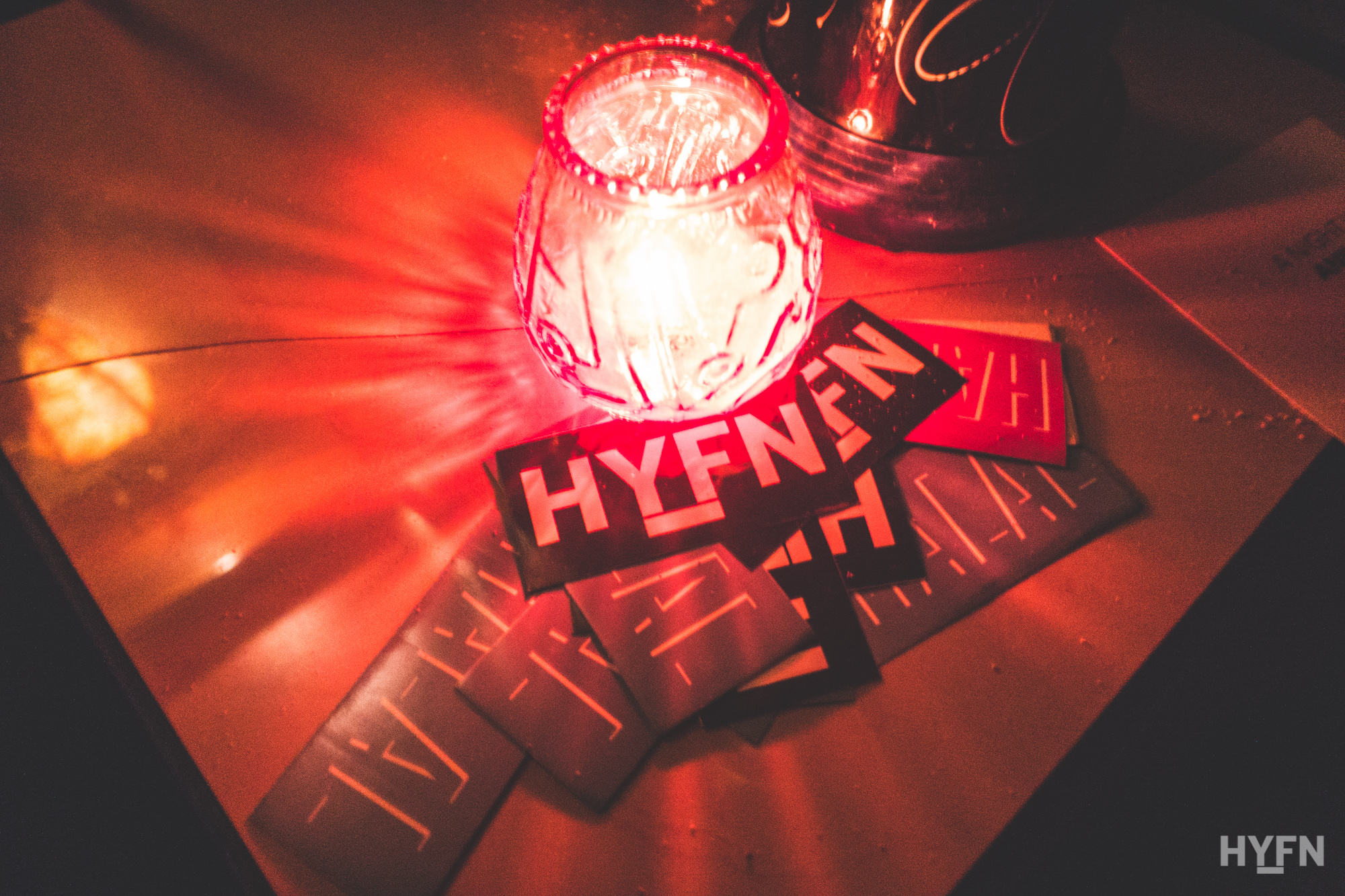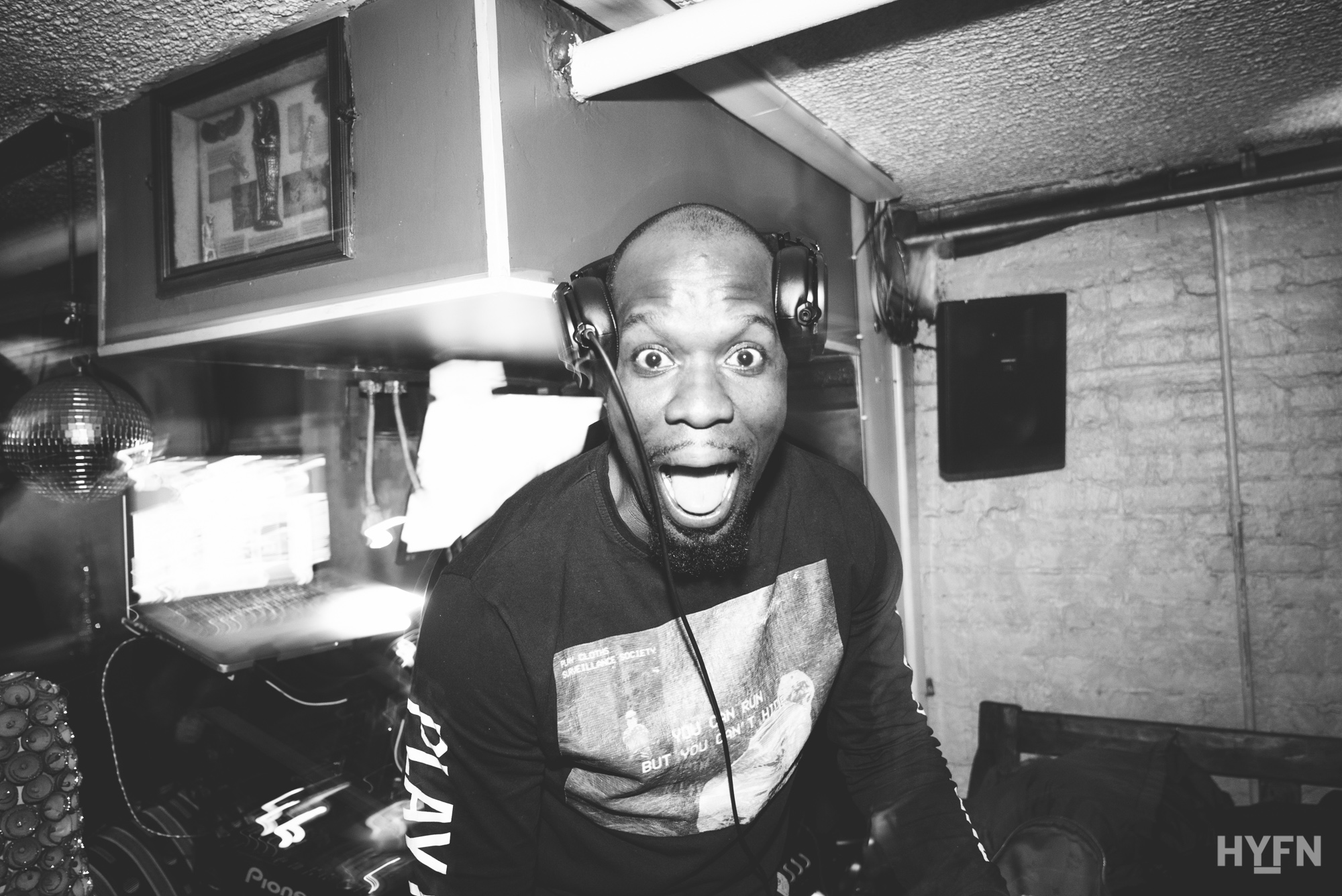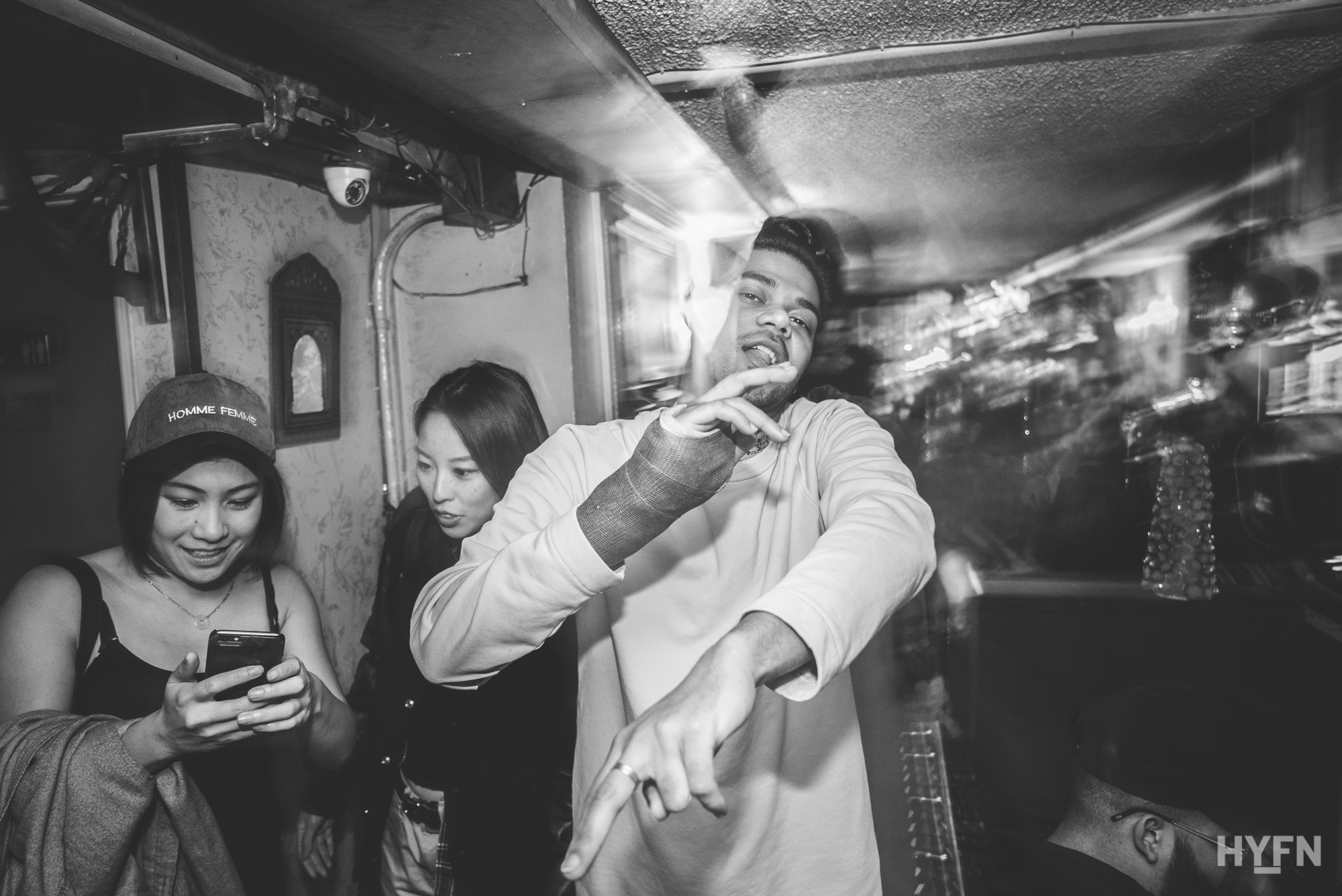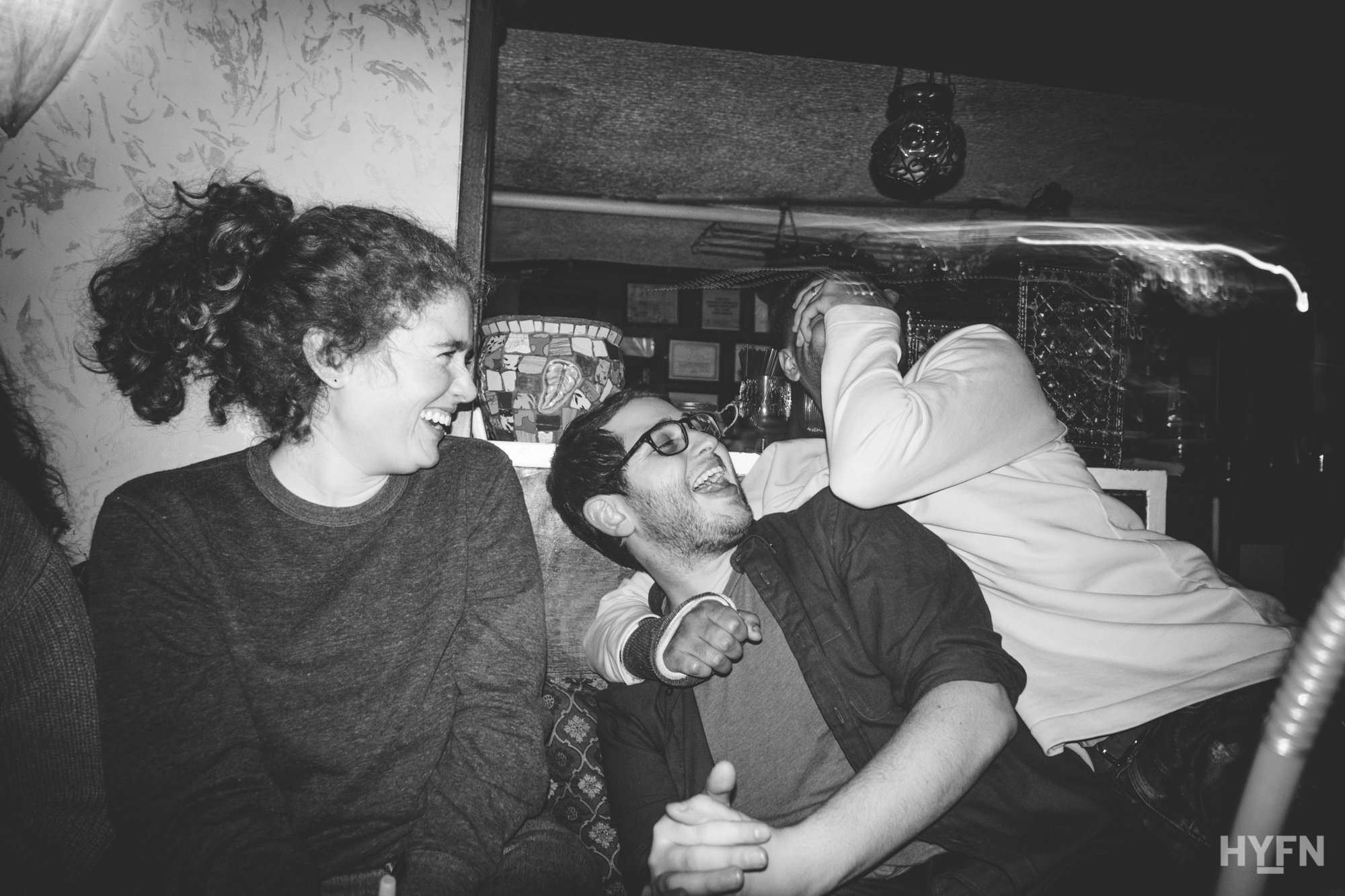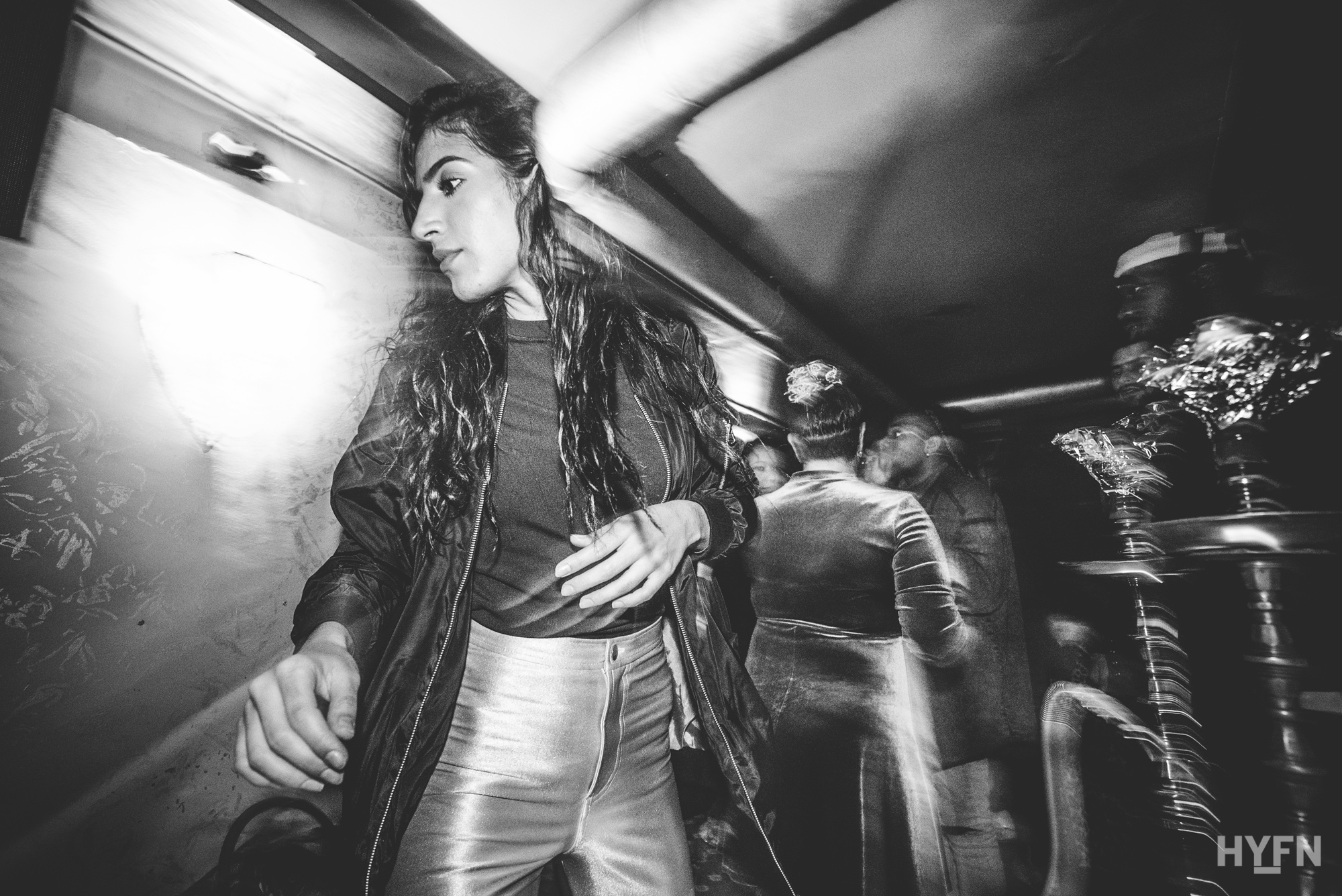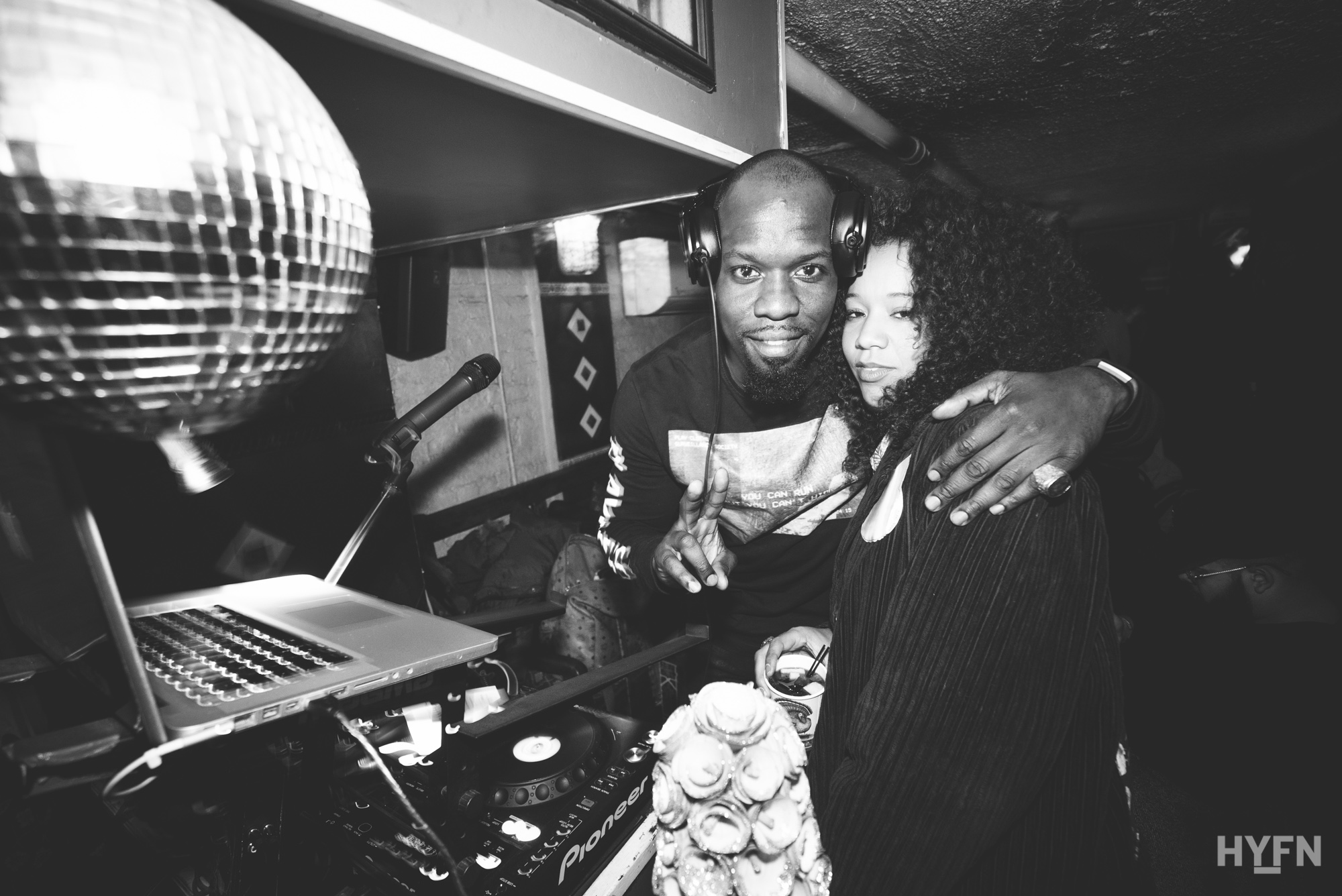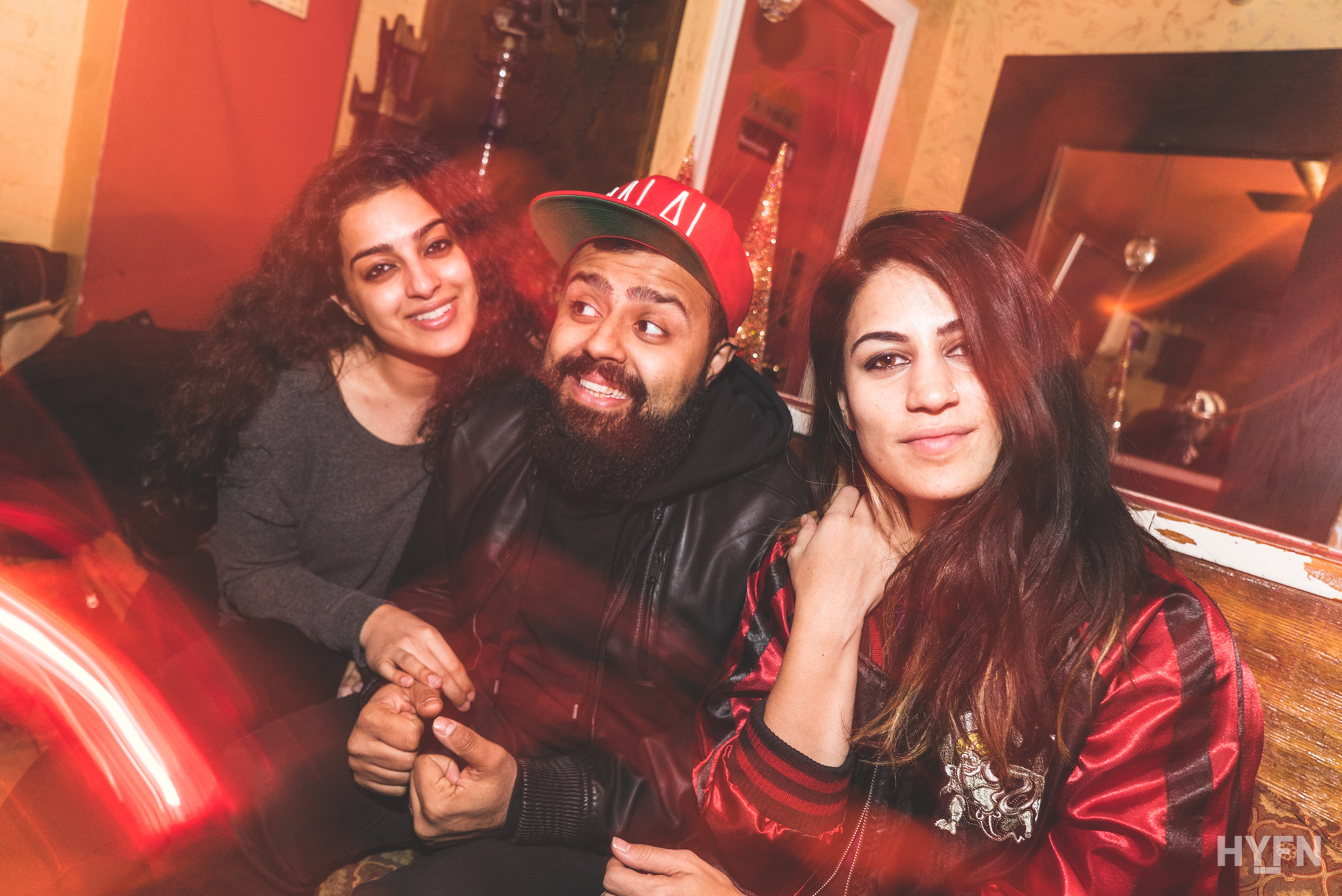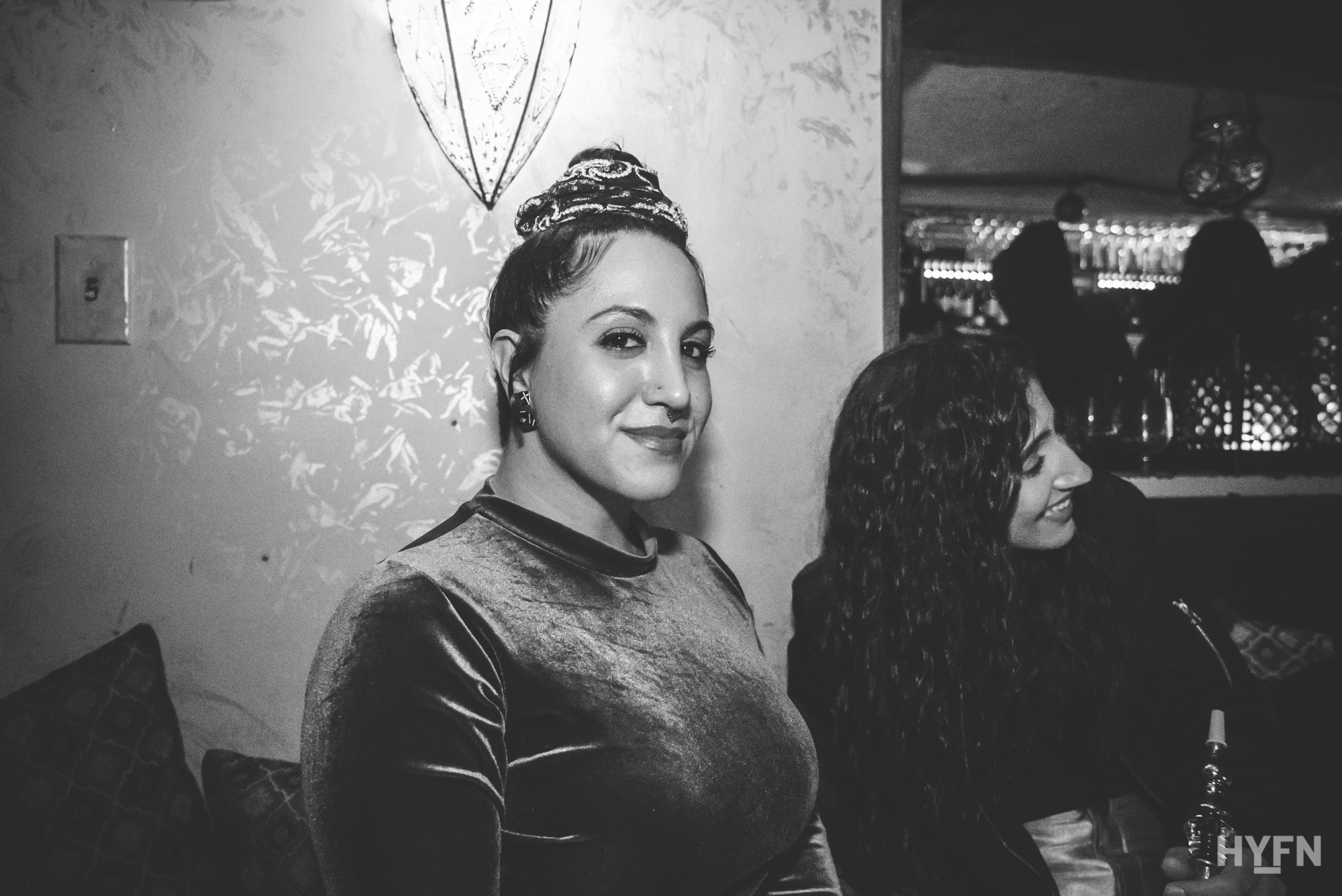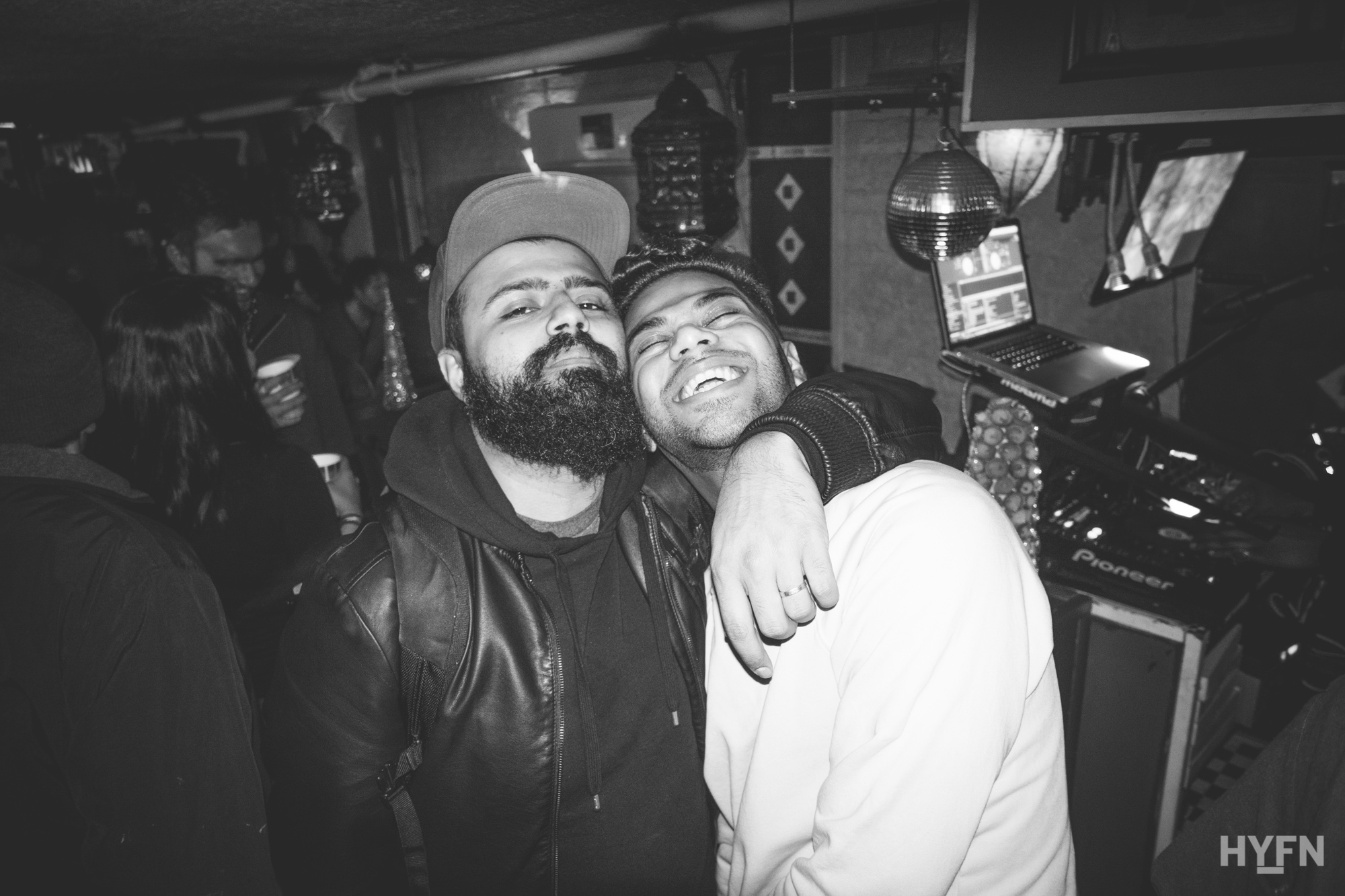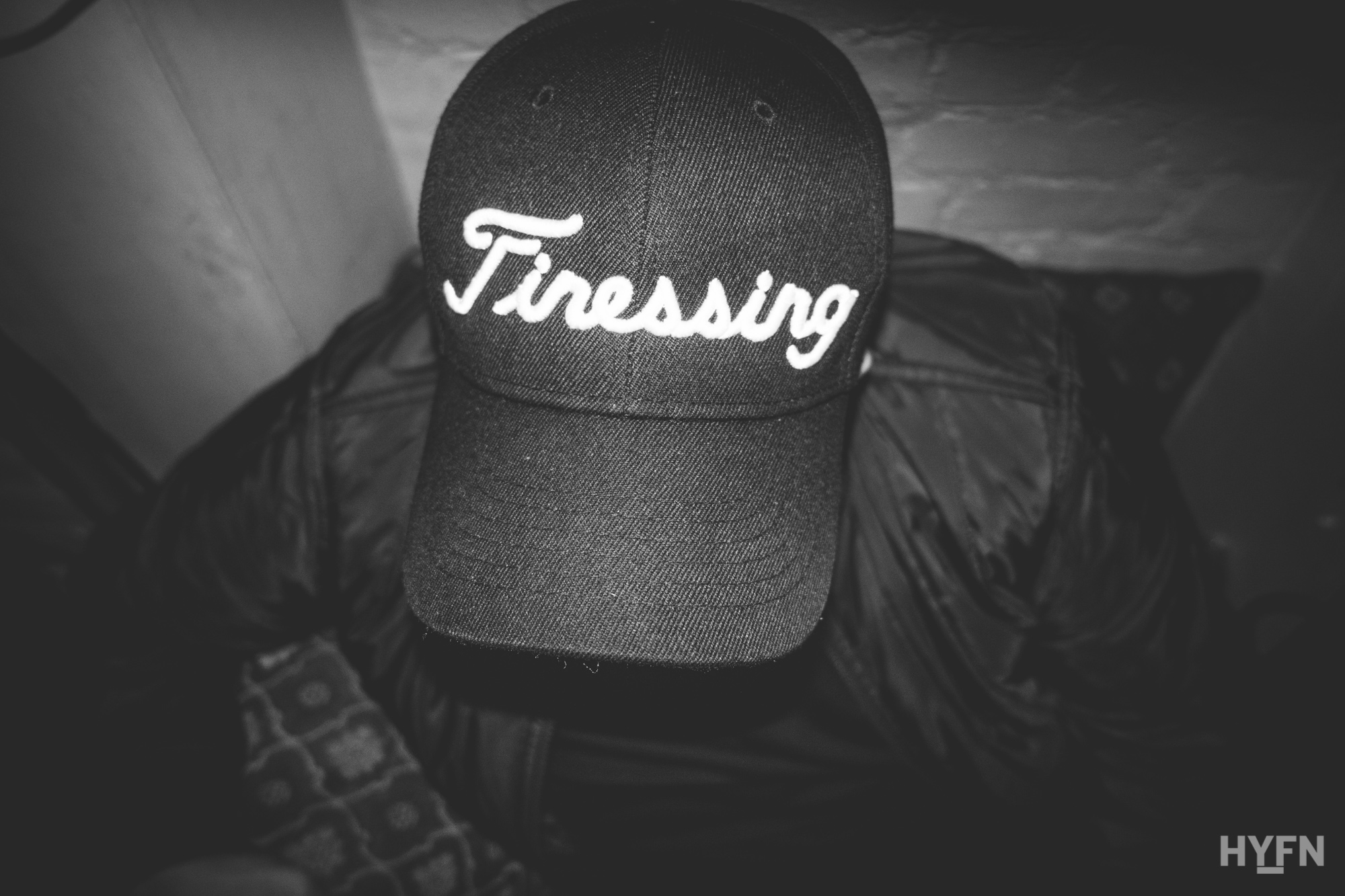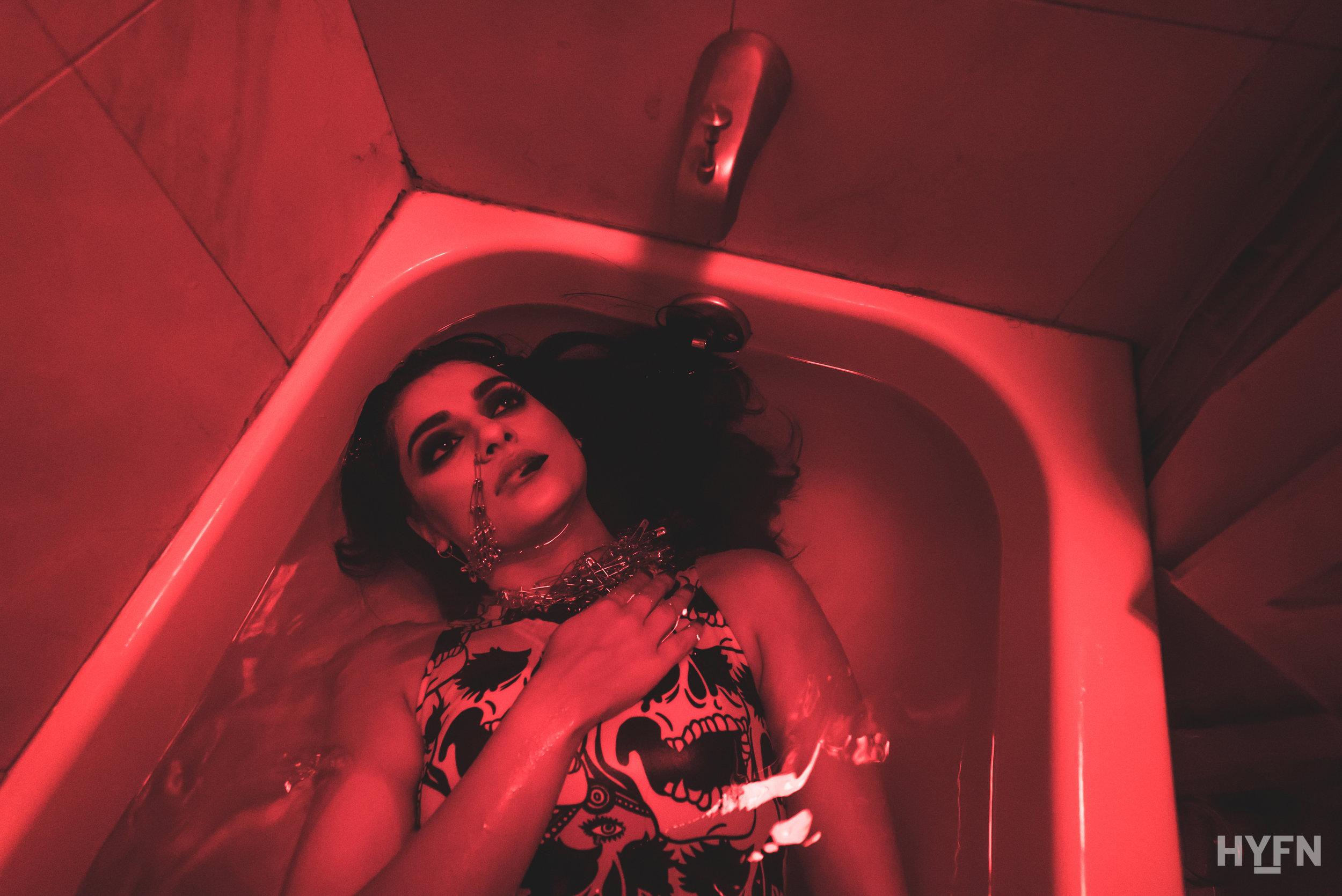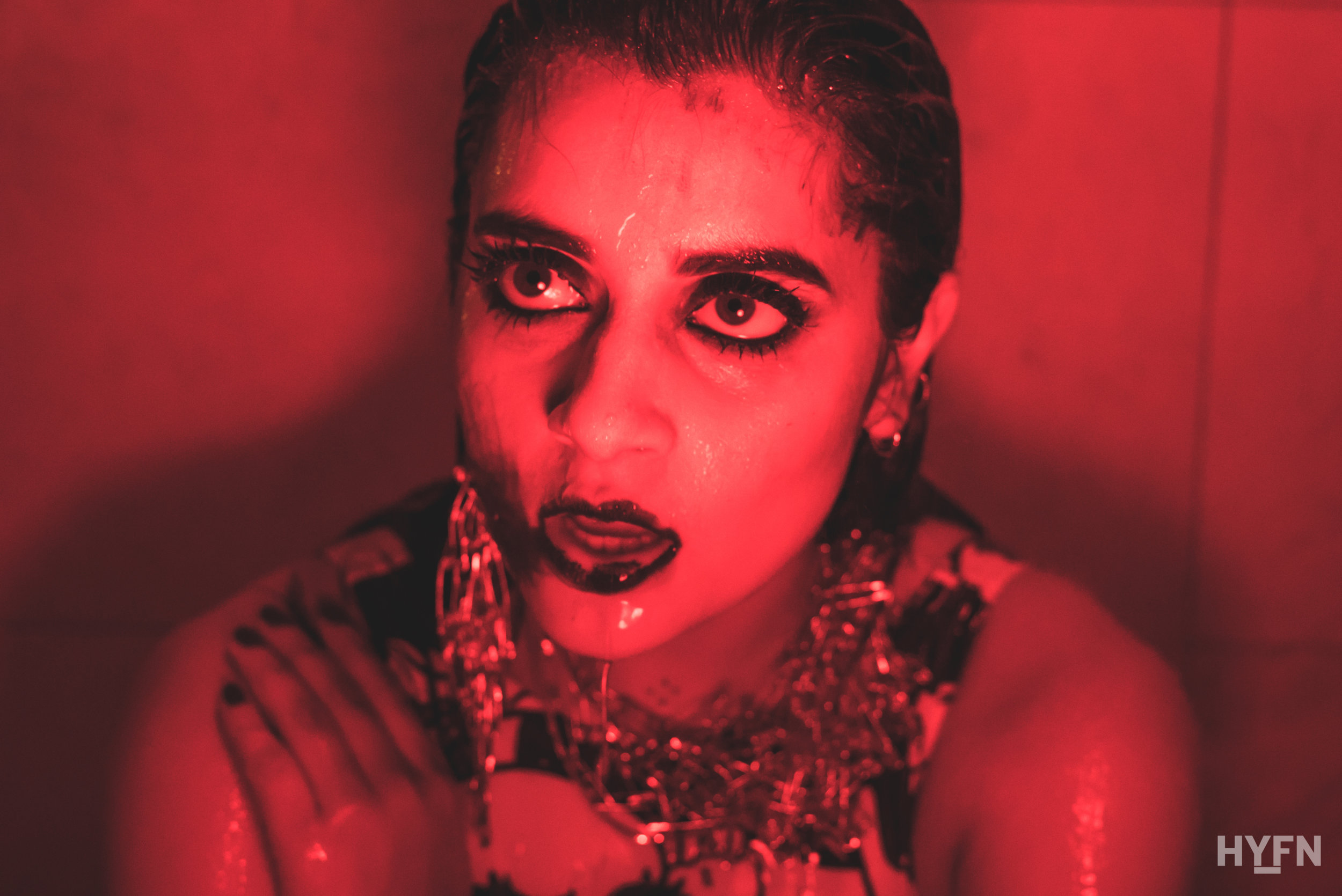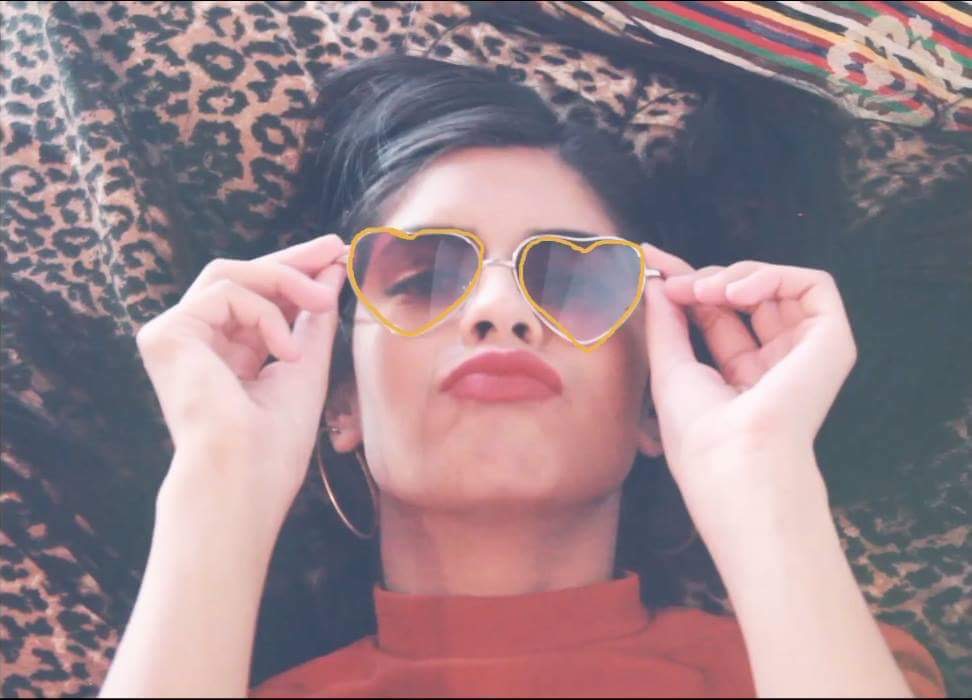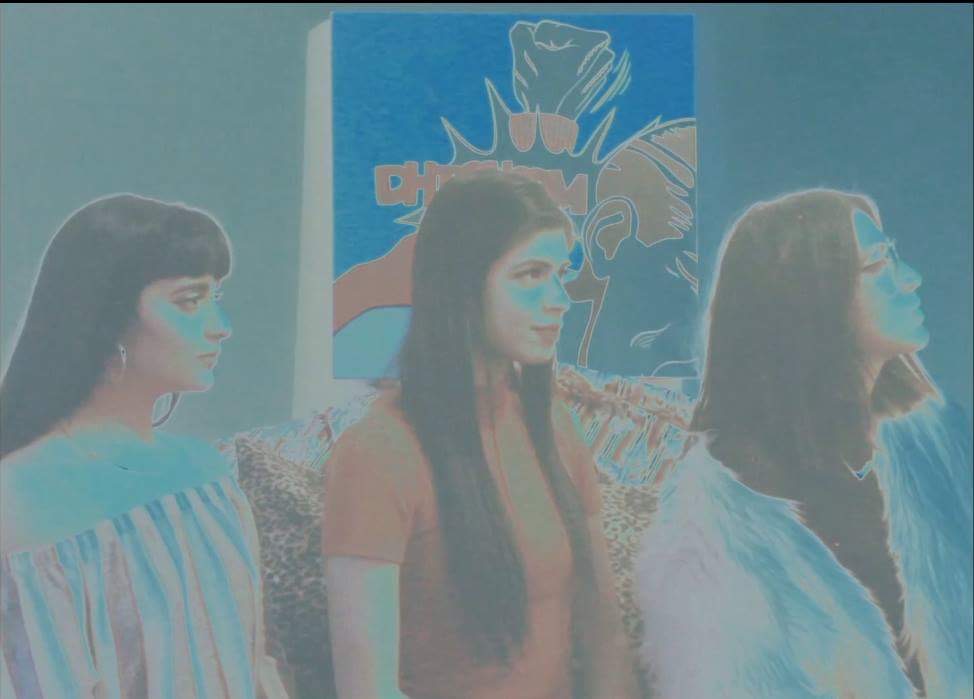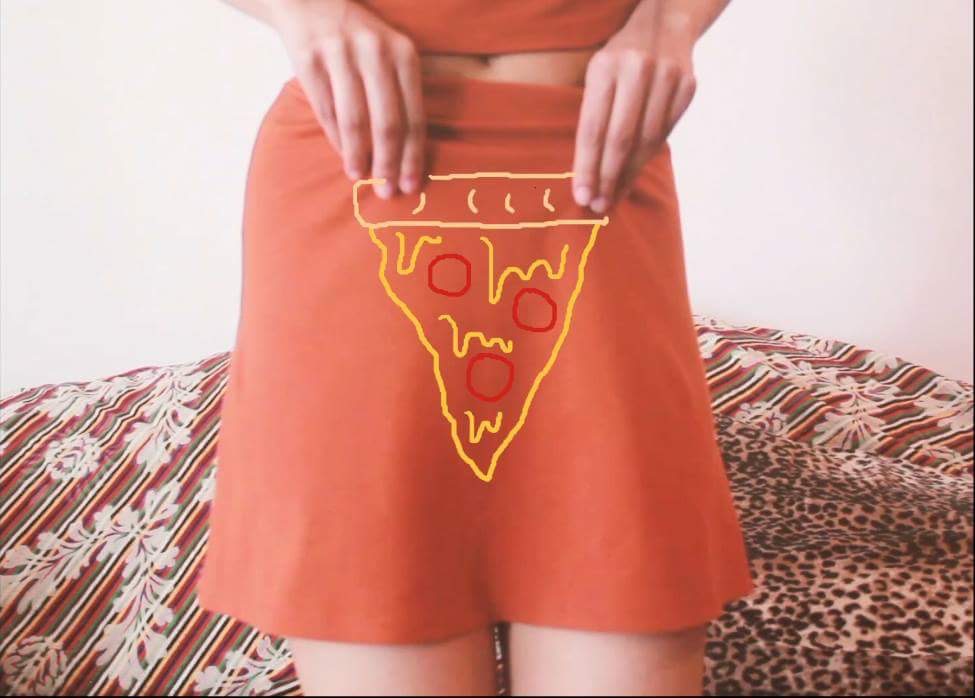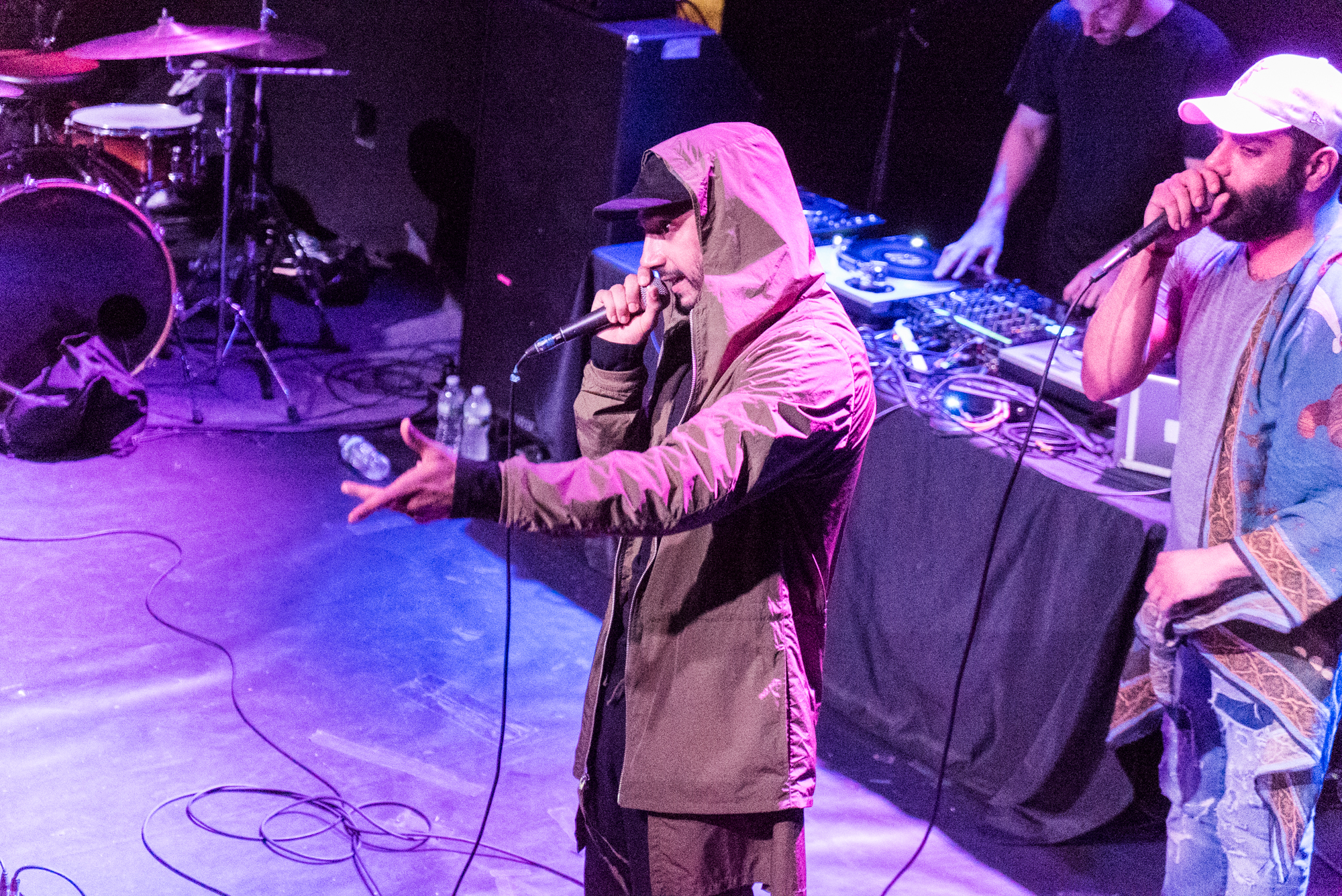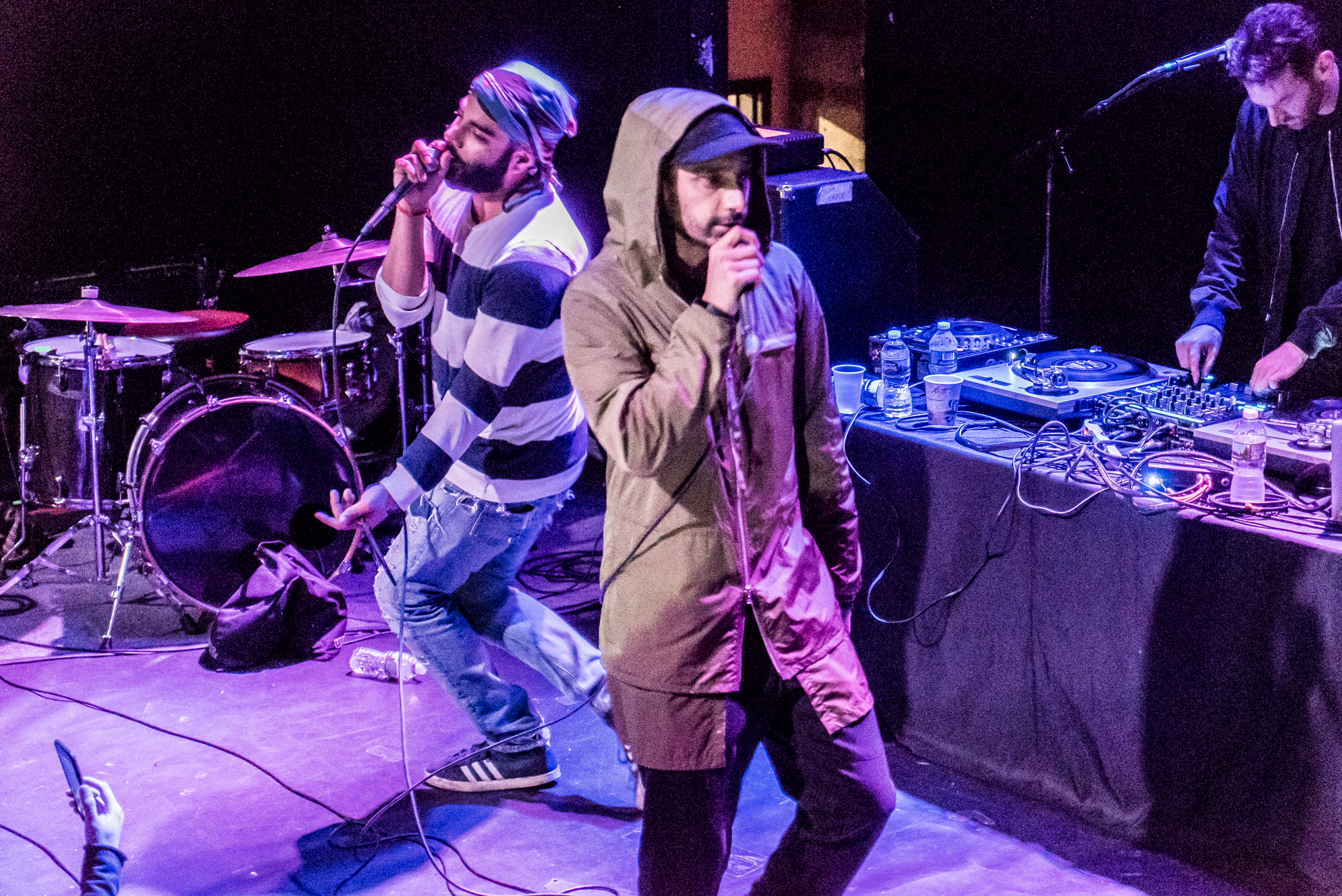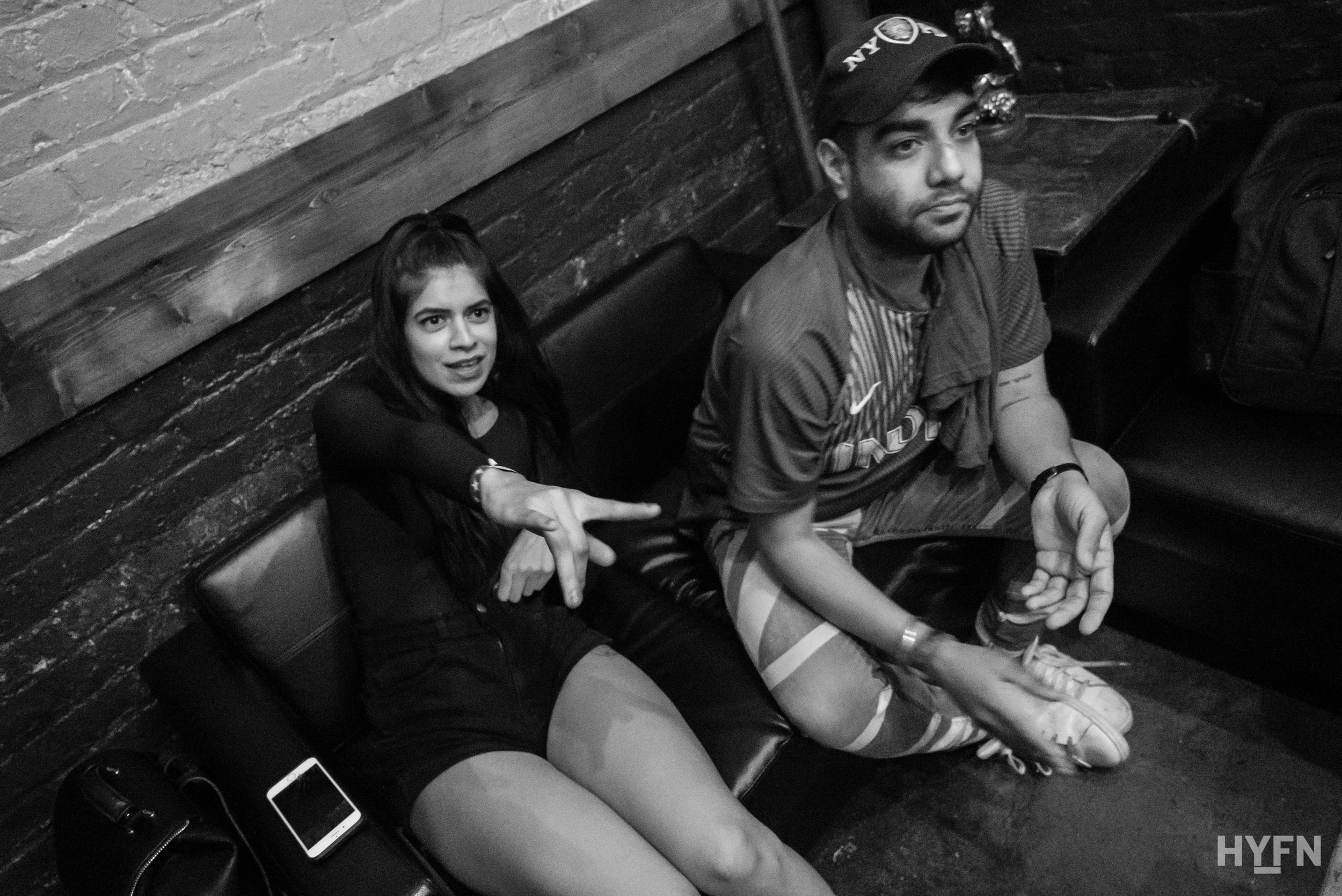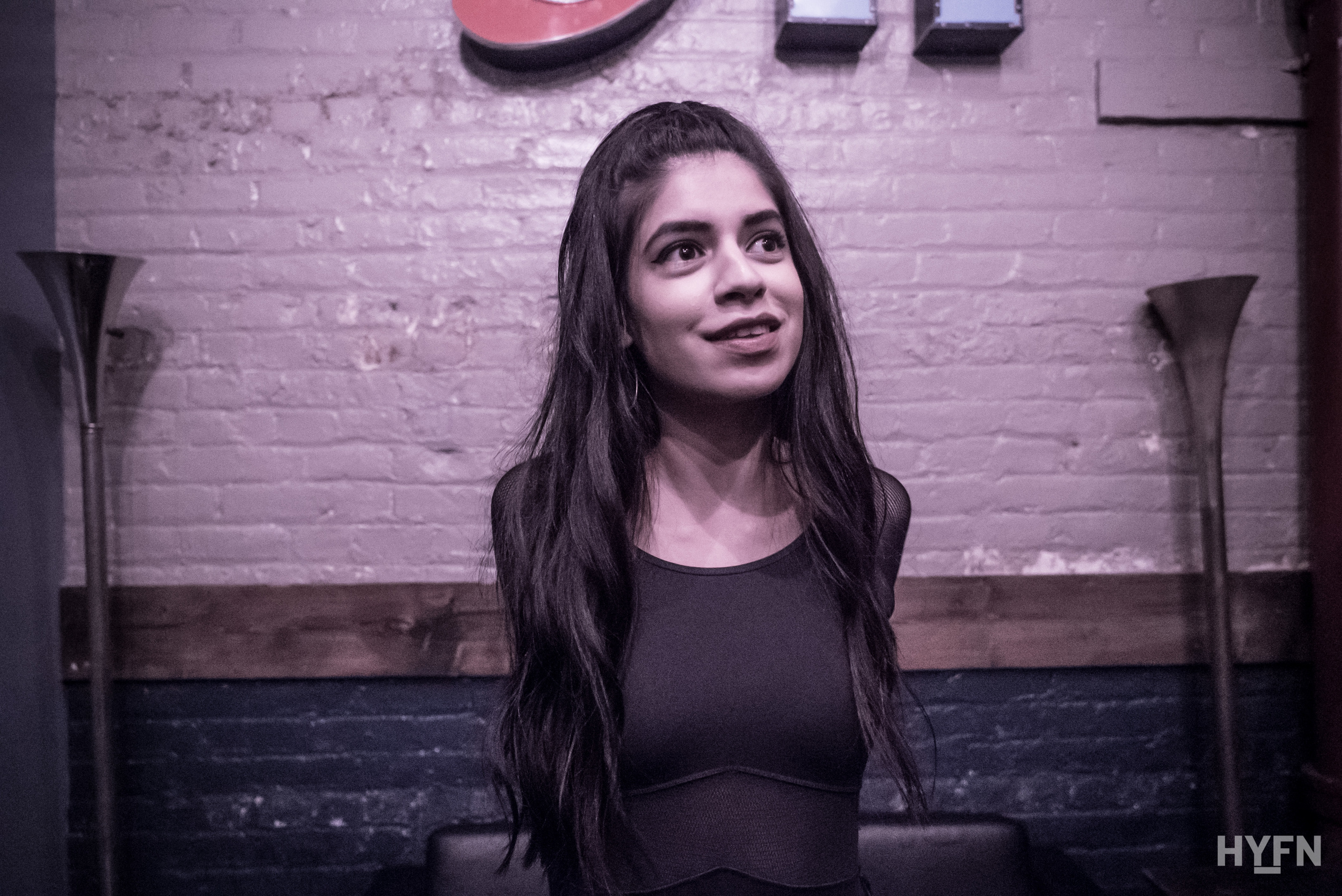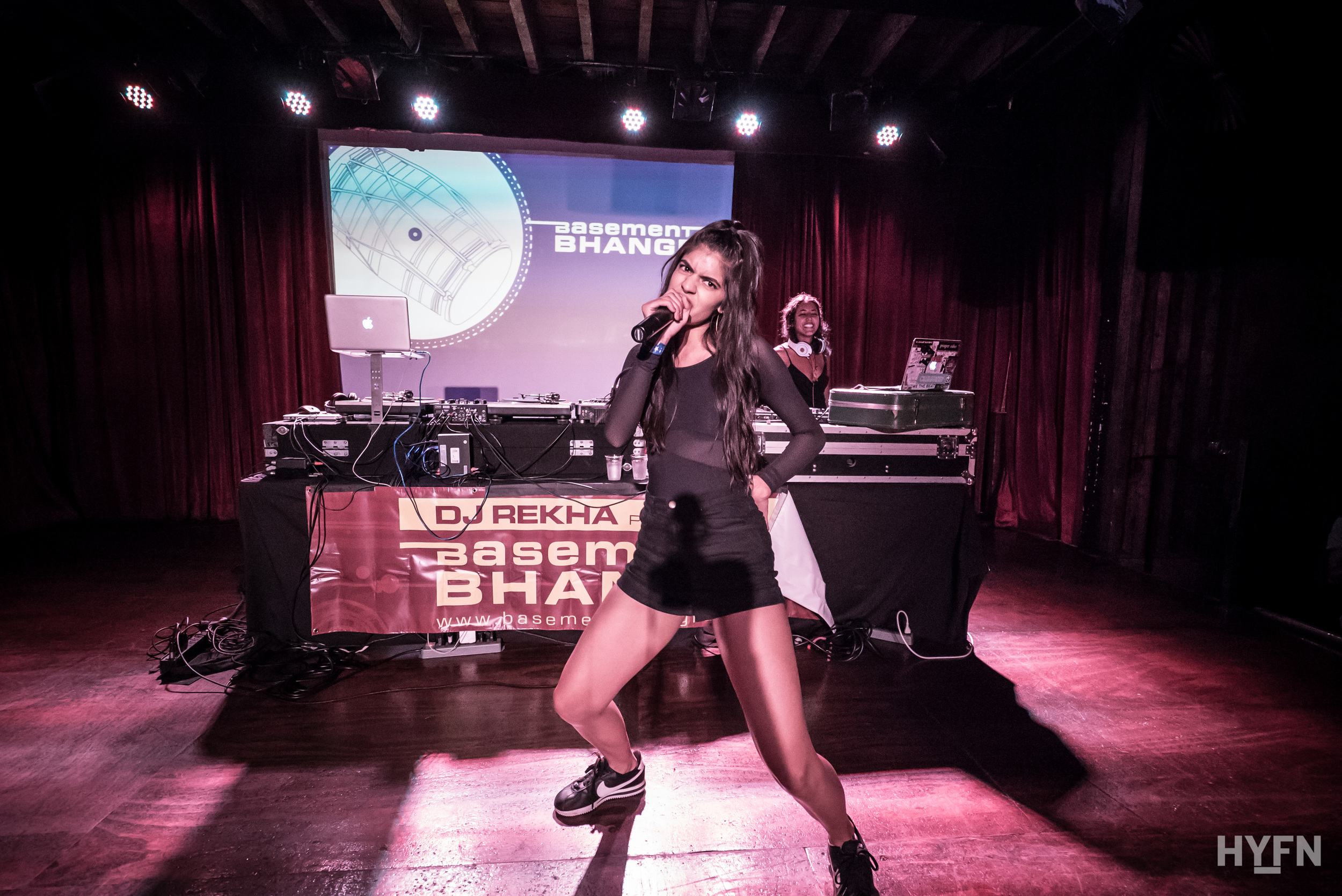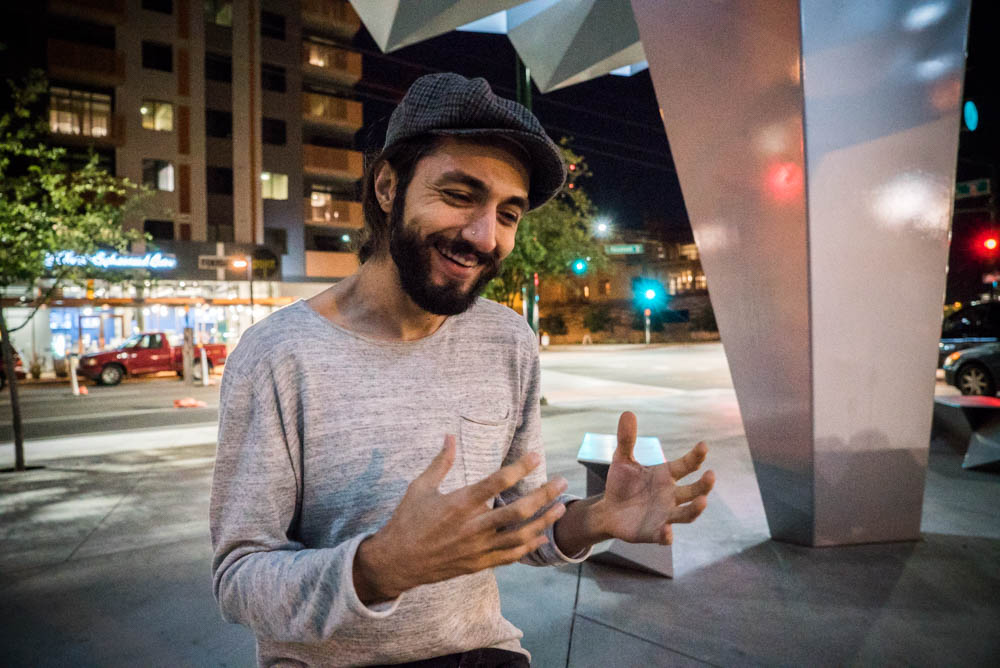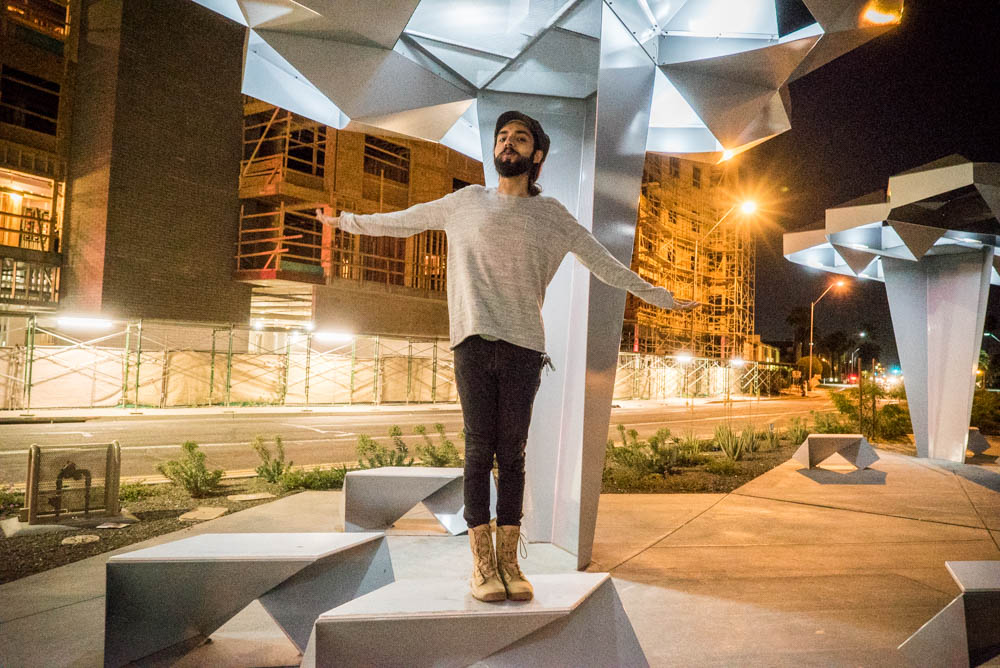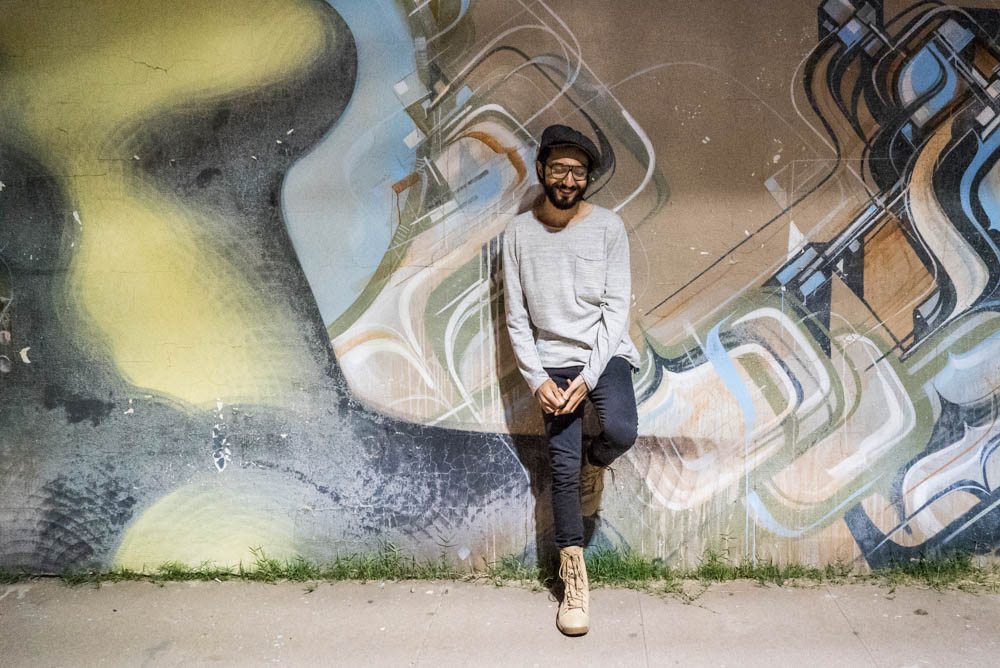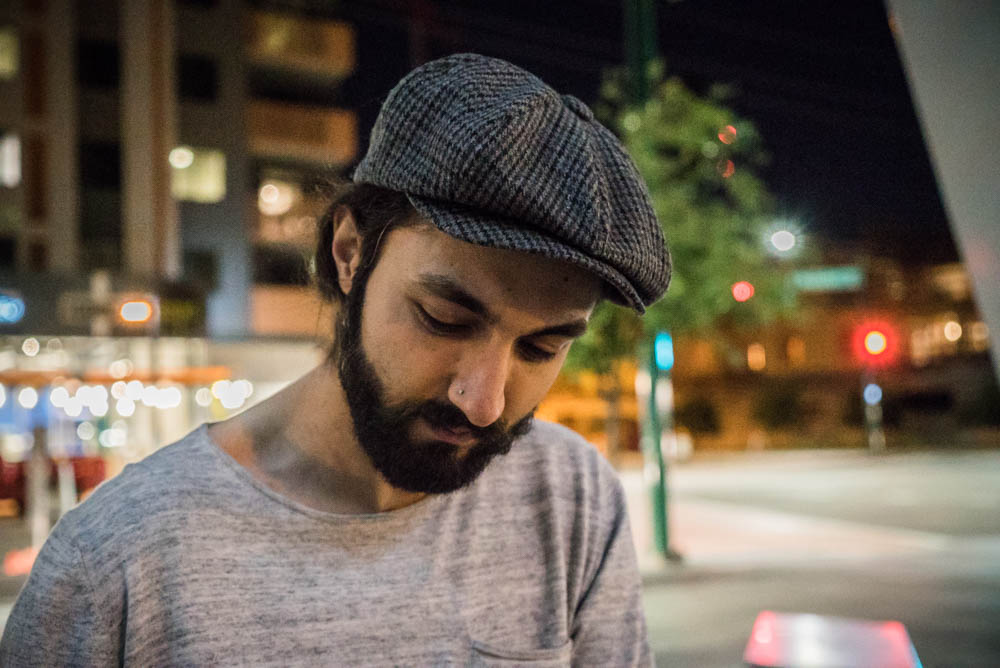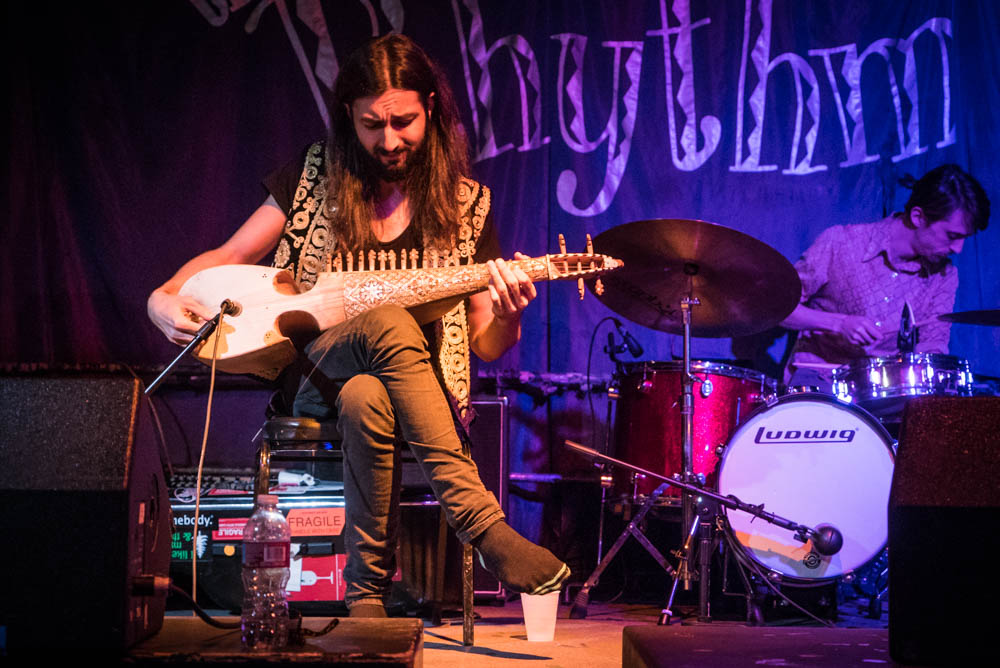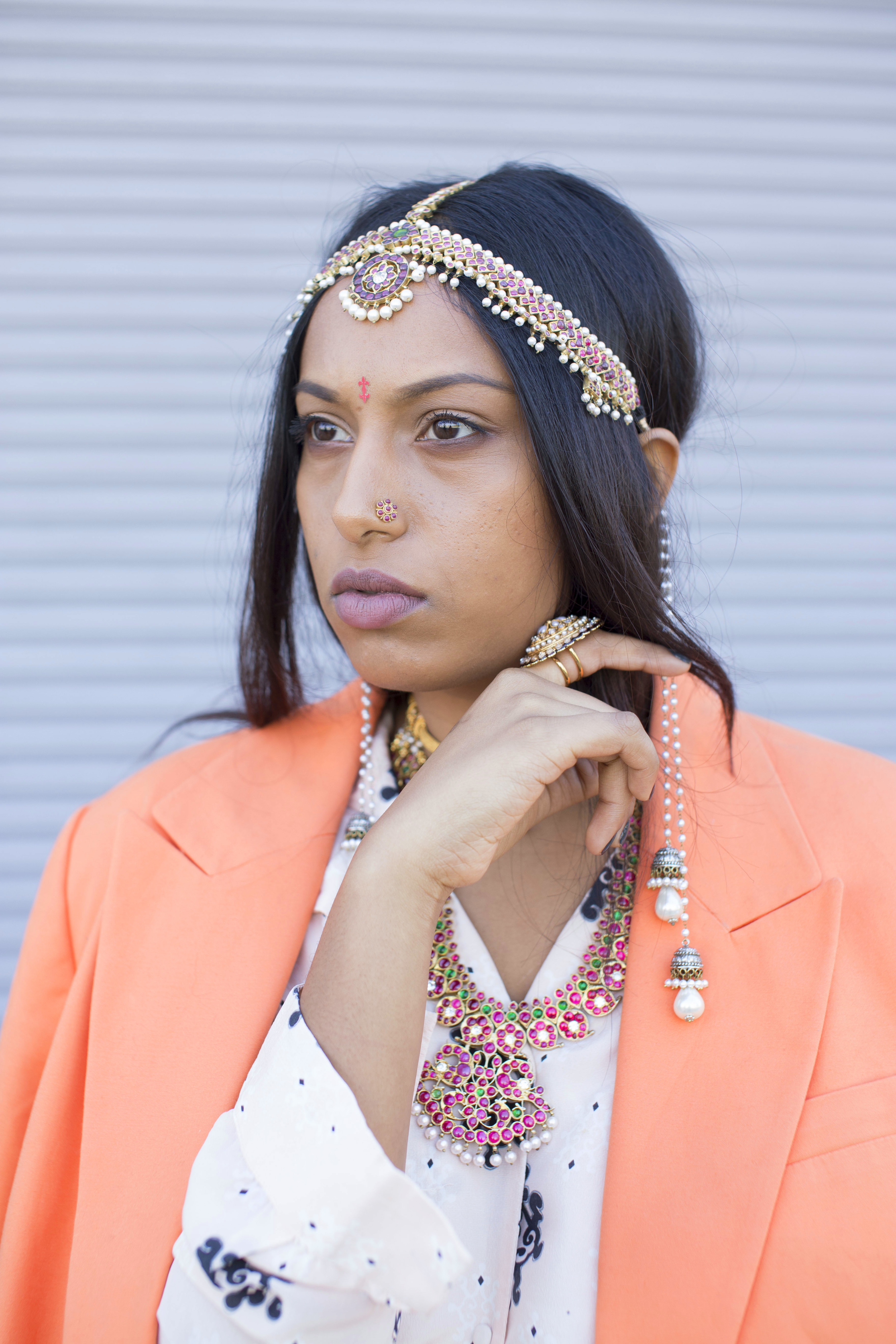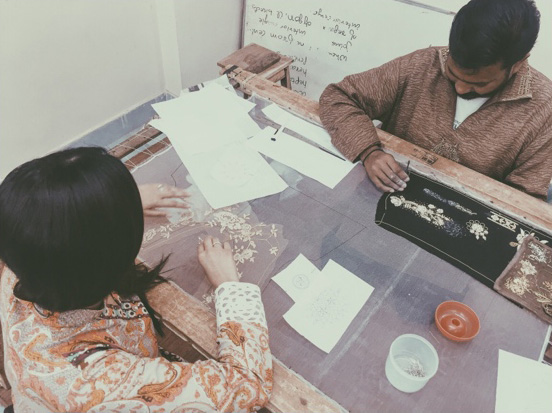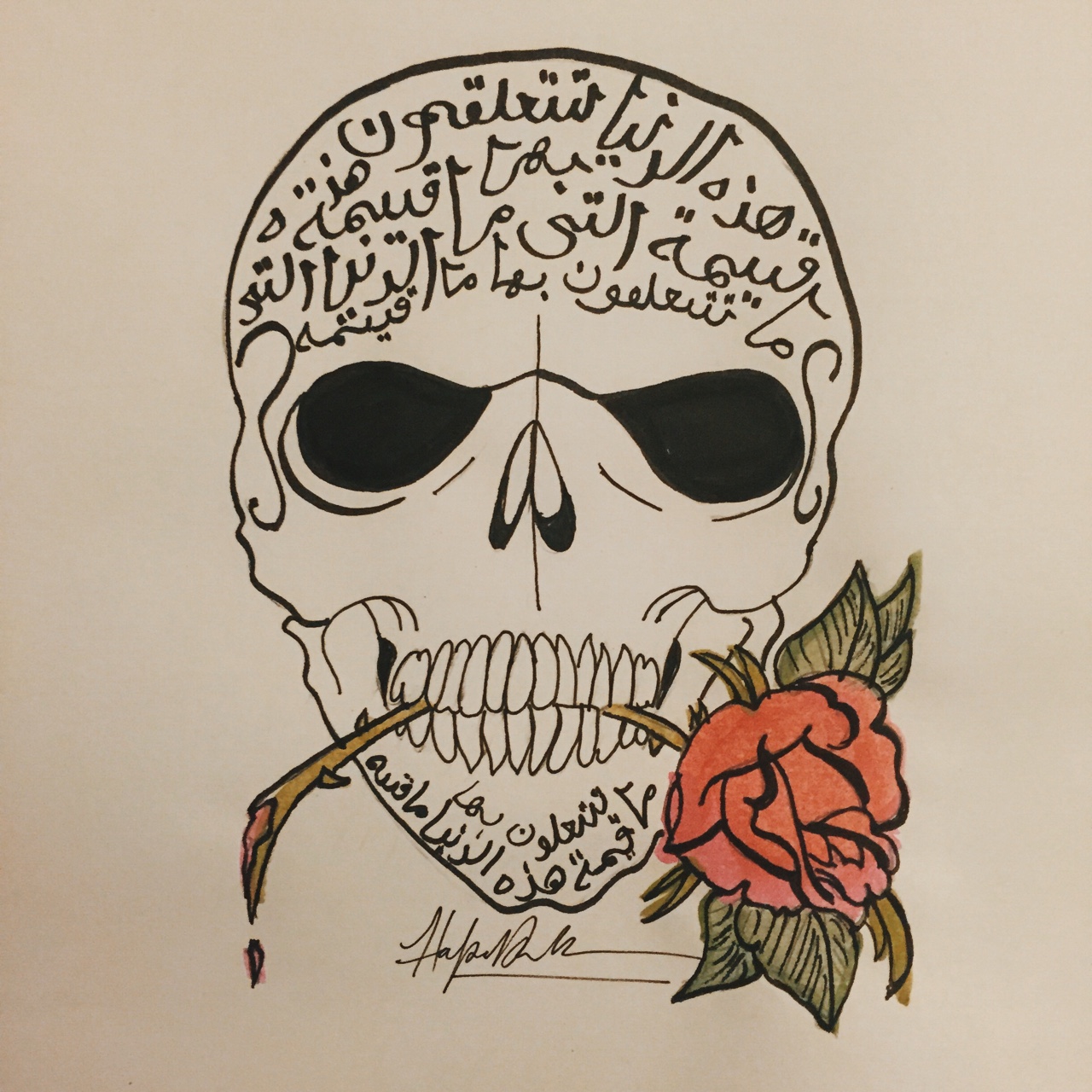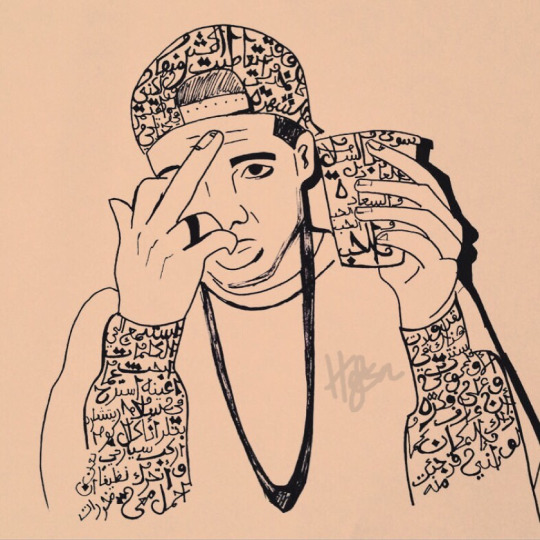You know we love the homie Anik Khan and were super stoked to see him perform at his first ever solo show (which sold out) earlier this week at Rough Trade. If you've seen him perform, you know he's gonna be a star. Here's some photos from that day... video coming soon. =)
We've been visiting Arizona quite often and after we started HYFN last year we met Negine. I'm always thinking about culture and our community, so on my recent trip to Phoenix I decided I wanted to take some photos of Negine in the beautiful landscape of the Southwest, where she lives. So we drove into the Superstition Mountains and came out with these.
I love taking portraits and experimenting with my camera. I want to meet more people within the community and if I can find a way to tell our story using photos I will.
Watch the Vlog that covers this in the previous post.
On her birthday last year, Abir dropped a song called Girls and we loved it. This past week she released the video and it's just as fire as the track.
She held an advance screening of the video and a Q&A that we caught at the Apple Store in Williamsburg, and announced it by bringing together a #BunchaGirls to create a fun little GIF campaign that celebrates immigrant roots.
AND her week got even more dope because Apple named her New Artist of the Week. Keep killin' it Abir.
Earlier this month Anik Khan threw an event to thank all his collaborators and supporters. It was a really great evening with a lot of positive vibes as everyone chatted over hookah and tea. He screened the documentary Vice produced on him and gave a first listen to two new songs off his new project.
What is Bad Beti? It's the idea that by being audacious and embracing yourself can sometimes lead to being judged and labeled. We often see this happen to our brown female youth when they don't fit into what's expected of them or when they push boundaries. Let's embrace our individualities and create a movement of positivity.
Our perspective on what makes a Bad Beti is simply that we support those who decide to own their decisions and live their lives how it feels right to them. This is unique to each person. A bad beti is a good beti is a beti.
The short film came to life after we heard that BabbuThePainter and Hatecopy (Babneet Lakhesar and Maria Qamar, respectively) were working on an exhibit called Bad Beti. We vibed with the message so we contacted them to collaborate with us on creating visuals for the project. After discussing the concept and visual treatment, we filmed over two days in a bathroom, on a rooftop and throughout the streets of NYC. The duo came through strong with a lot of energy and Babbu absolutely killed it on camera.
In addition, a few other key players were integral to making this happen. Working with Amaad Bhatti for the sound design was a no-brainer. He has a talented ear for heightening emotions throughs sound, which he did brilliantly through this score. Priyanka Babariya's makeup work is impeccable. Richa Kalra was on the Bad Beti support team contributing to the overall vibes.
Bringing together such a talented team resulted in some pretty fascinating imagery in the form of a short concept film, which we're thrilled to share with you today.
We've got your first look at Horsepowar's new music video for OUT2LUNCH here on HYFN! It's playful, fun and full of energy just like she is.
The track is produced by her good friend and radio co-host, Homeboy Jules, and Horsepowar says she didn’t realize how much she rapped about food until writing this song. The song is about
“being ‘out2lunch’ in a daze, a day dreamer, a Pisces living stuck in my own fairy tale believing anything is possible and obtainable. I always catch myself saying the wrong shit at the wrong time, which I always feel to be the right time. This song explains that. I reference Monty Python, Street Fighter, bhindi (okra), squirrels, Rick james, and my mom always going to Costco to buy bulk (shout out Kirkland products).“
There's a line mera naam joker about which Horsepowar says “I certainly feel like I’m a clown and I love being a clown and goofin’ around.”
This video hails a ton of strong female power. It was shot and edited by Baljit Singh aka Bsingh. It’s co-directed with Kay Ray who also stars in it. Hatecopy and Babbuthepainter appear in the video as well, and you can see Babbu’s denim jacket piece and Hatecopy’s artwork in many of the shots.
“It was such a fun day of shooting because it was just us hanging out. This video is a depiction of girl power aka girlPOWAR. I’ve realized my biggest support system in the music industry has been the sisterhood, especially within women of color. They've shown me so much light and love and helped deepen my inspiration for my work.”
Went to see The Kominas and Swet Shop Boys at their SOLD OUT show in Brooklyn at Rough Trade. One of the most endearing parts was that the audience was filled with all kinds of people. The Kominas killed it, they always knew what they were doing on stage but it keeps getting better. And Swet Shop Boys had the whole place lit, moving and rapping along.
Listen to their new album, Cashmere, here.
It's a great time to live. Being able to connect with someone, develop a relationship and eventually meet IRL is truly beautiful. Shout out to the internet!
Someone we recently had the pleasure of meeting from computer to person is Jasleen Powar, known as Horsepowar. When we heard she was going to be in NYC we knew we wanted to link up with her and tell this story. After spending some time with her we quickly realized that what you see is what you get, and what you get is a lot of enthusiasm & confidence.
DJ Rekha hosted Horsepowar and DJ Ayes Cold at her Basement Bhangra party that served as the official afterparty to Red Baraat's Brooklyn Mela. The evening was lit with lots of positive, fun vibes. If you haven't seen Horsepowar perform, you should.
Keep killin' it Horsepowar and, in your own words, don't change for nobody!
Stay Connected with Horsepowar : Soundcloud | Instagram | Facebook
Arizonian with Afghan roots, Qais Essar meshes his love for his heritage with a vision of the future. There is incredible beauty in keeping the traditions of your heritage alive through growth and evolution. Music is his magic.
Qais plays with soul. It's impossible to watch him on stage and not feel like you wished you played the Rabab too. The first time I saw him perform he played a classical set at a small showcase; the next week I saw him perform a more western-influenced set with his band, Qais and the Qosmonauts, that they had played at SXSW a week earlier. I've now heard my favorite rendition of Drake's Hotline Bling.
I met up with him for coffee a few days later to hear more about his story. He's an eccentric dude, with passion and a message. He seeks to show that there is more to his culture than the negative stereotypes most often associated with Afghanistan.
So, who are you?
Who is Qais Essar? I have answered this question a hundred times, giving a hundred different interviews and I now realize that I really didn’t know then.
Is Qais the habitual body that resides currently in Phoenix, Arizona, and was born to Afghan freedom fighters Najia and Akhtar, or a surge of energy that travels through my wiry appendage- a surge of energy that finds liberation in creating music? Is one more real than the other?
I am focused on re-definition: re-definition of a culture’s music and art, re-definition of the stereotypes that are designated to those of Eastern origin in the West.
How do you describe your music/sound?
It has taken so many years of learning, performing, writing music, writing HORRIBLE music, experimenting, failures- all an alchemical process that has led to the culmination of this new body of work and what my “sound” may be described as. Semantics however, are limiting, and if I do try to put it in words, it would resemble a pearl necklace of adjectives and niche subgenres.
“eastern-experimental-modern-creepy-classical-chamber music”… has an ebb and flow, what say you? I am marrying new traditions in new ways not heard before- we are creating the genre.
How did playing the Rabab become your thing?
Prior to the Rabab, I had begun training in both Eastern and Western forms of music on various instruments, and though I excelled and showed promise, the sound of the Rabab ensnared my heart. It was then, that I chose the Rabab to be the voice to express myself.
Is there a greater goal to your music?
Aside from my efforts in Art, I have my own socio-political agenda- namely to confront racism and xenophobia. In many places I perform, people have not even met an actual Afghan in real life, let alone know what a Rabab is. Their only insight on Afghanistan maybe what can be collected from popular media outlets, which often portray Afghanistan in a negative light. I want to show people that for every bad bit of news they read regarding Afghanistan, there are 100 other beautiful things about where I’m from that outweigh it. I really want to work towards the day that Afghanistan is firstly affiliated with beautiful music, art, and people- not war and violence.
What does being HYFNated mean to you?
Our HYFNs allows us to have a more diverse perspective. Growing up immersed in two different cultures, we have a vantage point, bridging cultures together. Knowing the best (and worst) of both worlds we can weave traditions together in harmonious ways, and given how the world keeps getting smaller, this becomes a bigger job. How long can borders separate people? Being HYFNated is the inevitable future.
What’s one challenge you’ve had with your culture growing up and how did you overcome it?
We often voice our frustration when the Man generalizes minority groups and assigns bogus stereotypes, but what was most frustrating was when I saw that these very generalizations and stereotypes were being perpetuated by the very same minority group being profiled. The aforementioned vantage point from the previous question that lets to have insight on two different worlds, doesn’t mean necessarily that you’ll fit in in either of them. I stopped letting imaginary expectations that existed only in the minds of others dictate my path in life, I make my own reality.
And how has your culture played a positive role in your life?
The beauty in my culture has, and will forever continue to inspire me and my work. It has also given me a purpose- to work towards the preservation and positive advancement of my culture. It’s there in every note.
What’s something you’ve learned that you found most valuable?
If there is one thing I have learned in my career thus far that I would scream to the heavens and anyone else that would hear, is that there is no room for ego in music. We are but mere vessels trying to channel something far greater than ourselves- music. I believe that those gifted with musical talents are like satellites, that they are gifted with something that can intercept and relay these interstellar messages. If anything gets in the way of this transmission, the message is altered. Stay humble, and remember our roles as cosmic mediums.
How does your family feel about your path?
Albeit it was a tough sell in the beginning, my choice equating to blowing my nose with my college degree, my parents have become some of my fiercest supporters. Most of my Youtube views are my mom.
What’s next for you?
I am preparing for my second LP release, Tavern of Ruin, which I may have previously mentioned being the apex of my creative endeavors. In the past I would hashtag any reference to the new work with #magnumopus, magnum opus- the great work. It’s my greatest work, I am very invested. Rabab has never sounded like this, never in this context, and I am beyond excited and humbled that I can share this with others.
If someone only listened to one of your songs, which would you want it to be?
I love all my music babies equally, so I would invite whoever to listen to the entire new record. But if I REALLY had to pick one, it would be what will be the first release for the new record, which will be debuted very soon.
We'll be following Qais' journey and sharing his new work with you on HYFN as soon as we can.
You can learn more and listen to Qais here:
www.therabab.com
Facebook
Instagram: @q_essar
It feels like one of the biggest pressures in society is finding someone to spend the rest of your life with. Marriage is a hallmark of many cultures and religions, and somehow womanhood seems to be traditionally defined by this institution. Nothing wrong with marriage itself, but cultural mindsets around it can be distressing. South Asian culture places a huge importance on marriage and to whom you get married. Lives revolve around this pursuit and it creates incredible confines. What does a dulhan look like and how does she act? What is expected of her?
We found a project called 'Not Your Dulhan' that explores these concepts. And since HYFN is all about dialogue, empowerment and uniqueness, we dig it. Speaking about cultural challenges and sharing varying perspectives leads to conversations that can challenge the norms. Reva Bhatt, one of the creators, gave us a little bit of background on this project.
Pictured from Left to Right: Shreya Kumar, Josephine Shetty, Priyanka Kanse
Tell us a bit about this project.
”Not Your Dulhan”, a collaborative photo series by Jasdeep, Pragya and I (Reva), explores how 3 different womxn challenge the stereotypes and expectations surrounding the “perfect dulhan” (bride) within the South Asian community. We asked three womxn we’d never met before what their thoughts were on the idea of marriage and ultimately hoped to capture those conversations surrounding colorism, ageism, and sexuality within our series. We learned that despite their unique backgrounds, these womxn share a thread of common experience which they express through small acts of resistance in an effort to redefine the institution of marriage. #NotYourDulhan is about these womxn transcending beyond the guilt of choosing themselves by reclaiming a level of consciousness.
What inspired you to speak on this aspect of our culture? Are there personal experiences tied to this idea that you can share?
This series stems from our lived experiences as brown womxn. Jasdeep, Pragya and I all come from different backgrounds, yet we all seem to have a “Mina Aunty” lecturing us about marriage at the dinner table. Most of the time, we brush off our parents’ remarks about all the “nice boys” that will be at summer shaadi and how Mina Aunty’s son from Stanford is in town. But ultimately, we’re terrified - terrified of the abstract that still somehow has the power to control our everyday reality. It’s crazy to think that our identity will always live, for our parent’s generation at least, in a subconsciousness where marriage defines our success.
What do you plan on doing with it next?
“Not Your Dulhan” is up at the Sol Collective exhibit in Sacramento, CA for the rest of March. Beyond the current exhibit, we hope to take the exhibit to different spaces and to continue promoting open and global dialogue about the institution of marriage through #NotYourDulhan.
Looking forward to hearing the conversation that develops.
You can see the full series and read more about the project by visiting the artists' various platforms:
Reva website | instagram | twitter | tumblr
Jasdeep website | instagram | twitter | tumblr
Pragya website | instagram | tumblr
photography Jasdeep Kang
art direction Reva Bhatt
on-set art direction Pragya Bhatt
When we first came up with the concept of HYFN, Sahar Dada popped into my head. She is the founder and designer of her womenswear label consisting of elegantly hand-embellished silk and chiffon pieces that blend Pakistani and Western concepts.
She’s based in Chicago but her production house is in Pakistan. She’s currently in Karachi wrapping up her Fall/Winter 2016 collection, finishing up custom orders for private clients and working on some fun collaborations that will be launching later this year. So while we wait to get our hands on some sneak peaks and behind-the-scenes content, we wanted to share how Sahar came to do what she does.
She says she never would have thought that her summer vacations where her parents grew up would turn into business trips and be such an integral part of what she does. Her aesthetic really embraces this multi-cultural upbringing.
What’s your HYFN?
“First generation American-Pakistani. I think life is all about balance and finding that balance can be really challenging at times. I'm really looking forward to seeing how HYFN provides a platform to highlight those identities.”
What’s a challenge you’ve had with your culture growing up and how did you navigate it?
“I went to an Islamic College prep school and during college application time everyone around me was applying to med school or law school or engineering programs. Then there was me. I was applying to various art schools. I ended up attending the Institute of Art based in Chicago, but tried to be convinced otherwise. I was always told to do it on the side, that it wasn’t a big deal and I didn’t have to do it full time. I didn’t listen. I didn’t want to listen. I wanted it to be my sole focus. Looking back I wouldn’t change anything. Explaining that desire in high school, at such a young age, probably didn’t translate well but I’m glad I took the steps I did and that I was able to break the norm of what was expected of me being of Pakistani background.”
Tell us a bit about how culture played a positive role in your life?
“The positive influence of my culture comes in many different forms. I’m surrounded by it constantly and I wouldn’t have it any other way. It makes me feel like I belong to something special. It’s everything from my morning chai, to my work, to constantly listening to Coke Studio. It’s really who I am, it’s where I’m from and it’s why I’m here. It really helps me appreciate and respect other people’s backgrounds and cultures as well. Designing both Pakistani and Western and merging the techniques is how my culture has influenced my work. Both going hand in hand helps me create what I create.”
What’s your vision for the future of this emerging culture?
“To break stereotypes. I think our generation of American-Pakistanis will be able to break down barriers. There are so many people with Pakistani roots that are embracing their creative sides whether that’s in America or abroad and it’s really time to bridge the gap between here and there.”
How has social media influenced your work?
“Social media, especially Instagram, has played a huge role. It's provided me with a creative way to share my work, my production and behind the scenes, and my personal story. I really hope it inspires other people as well. I’ve built some really great professional and personal relationships and come across some amazing clients from across the world. It's a great platform to connect with so many different people in so many different places.”
Who has been the most influential person in your life?
“I know it’s cliché but most influential are my parents. I know so many people will be able to relate to this: Our parents literally sacrifice everything. From what they knew to where they lived. They adapted to a whole new culture to give us a better life so that we can be whoever we want to be. They gave us the ability to balance both their culture and embrace ours and they did it so effortlessly. I hope that in the future I’m able to do that for my own children the way my parents did for me.”
So far with all you've done what are you proudest of?
“I’m proud and humbled that I play a small role in highlighting my Pakistani roots in a positive way. I hope that it has some sort of relevance and that I can continue doing what I’m doing. I think that you should never be ashamed of who you are and that you should only embrace it.”
Okay, lets wrap with up with something fun - is there a favorite childhood dish your family used to eat?
“Khausa! It’s a Burmese dish - my ancestors are from Burma. It was my favorite food, I loved eating it. It's like the Desi version of ramen essentially. Downright comfort food that I still love to this day."
Sahar is working on a special project called Ari and Oak that she says is very close to her heart. And appropriately so. It's a collaboration with her mother, who has been designing traditional women's Pakistani-wear since the 90s. Ari is a technique used to sew wire onto the fabric before any embellishment is applied. Oak is an acronym for ‘one of a kind’. It seems that Sahar has learned a lot from observing her mother's work and has really made it her own through her own experiences. Looking forward to seeing what comes of their work together.
She's working on a few other smaller capsule collections in hopes of showing her versatility as a designer, and is working to expand to both coasts. More to come!
Find Sahar here:
@sahardada
www.sahardada.com
I found Hafsa aka Haf (@hafandhaf) on Instagram sometime last year. She creates vibrant portraits with ink and paper, splashes in some watercolor and seamlessly incorporates Arabic calligraphy. Her pieces creatively merge Western icons with Arabic writing. Sometimes quite boldly.
Her work embodies HYFNated identity. The brown community has not been very quick to evolve culturally or with the times. We are tremendously set in our molds. I think there is this fear that allowing "other" cultures to influence our own will lead to complete assimilation or abandoning our heritage. Heritage is an incredible foundation for our future and a lens into our past, but evolving practices and perspectives should be applauded not squashed. We're seeing this start to happen and it's exciting.
So, what's your HYFN?
"It's different depending on who I'm talking to. At work it's Muslim-American. When I'm with my friends I'm Pakistani-American. I feel like when you have that hyphen, it kind of pressures you to hold some sort of stigma that you have to represent whatever your hyphen is which isn't necessarily true. I work for a U.S. Senator and a lot of the stuff we do is federal legislation and policy, so I'm constantly put in a position where I have to represent this unrepresented voice in government. I'm always using the hyphen Muslim-American or Pakistani-American. When it comes to art, I feel like I want people to know the artist through the art without having the conversation. I can't have a conversation with everyone, so I want it to speak for itself."
How does your art speak for you?
"I feel like when people see my art and they see the calligraphy inspiration or a face that they haven't normally seen or is different from theirs, it gives them a lens into who the artist is."
I like this idea that she's alluding to, of not having to outwardly categorize yourself. It's pretty clear from her work what aspects of her culture she's most fascinated with right now. Her passion was born with the art of written language which stemmed from a love of religion and culture. It's evolved into something that really embodies her identity. After graduating college a few years ago, she started exploring the growing creative community of Columbus, Ohio, where she felt inspired to blend her love of Hip Hop subculture and her heritage through her art. Her first piece was Biggie with calligraphy in his crown. She always wants to bring it back to calligraphy.
I really like the Biggie piece. It's simple and raw.
"Some people don't like the fact that I do those pieces, like frame Biggie and put Arabic calligraphy in his crown. But that's just who I am and I'm going to continue to do it."
Of course, you gotta do you and what you feel comfortable with. On that note, what challenges have you faced being a first generation embracing your heritage and your American culture?
"The issue I've specifically faced is an identity issue. The kinds of music and venues I like to go to are part of the African American community. The people that are my closest friends and that I've grown up with are Pakistani and Muslim. So I've fluctuated because I don't know where I fit in each of those social settings. The backlash with my art has been the traditional Muslim or Pakistani people within the community that don't like what I'm doing and often times think it's blasphemy since in Islam it says don't paint faces or draw people. And by adding in Arabic calligraphy they think I take it a little too far. But I think you can do that. They're not mutually exclusive. If you love the two things why not merge them and marry them together. "
And how do you not let the traditional viewpoints steer you away from doing what you do?
"I open a lot of eyes to Arabic calligraphy used in a different medium. A lot of people I know don't know anything about my culture, so I feel like I've done outreach by teaching them this is what it means and how you pronounce it. It's a little victory in my heart. It's like there's this conservative man who is mad that I did this but my art caused this one person to ask me what that meant and we had a conversation around it."
This is clearly something you love a lot, is it just going to stay a hobby?
"Well, I wouldn't call it a hobby. It's a lot more than a hobby, it's my creative expression. I grew up with society's standards of what a career is. A lot of brown people are instilled with this idea that creative arts can't be a career. I have a passion for the work I do in the government and working for the people. So it's about finding a balance and fulfillment between the two."
How would your parents feel if you decided to solely pursue art?
"My parents encouraged my creative outlet. They love what I do because it's different and they love that I incorporate my heritage. My house is covered with my calligraphy. I've never actually had that conversation. People are discouraged to pursue these things because they don't want to prove their parents right, but we should create an encouraging environment. Most of the people that want to do these things don't have that at home. There are probably kids out there that don't know that there's other people doing these things that look like them."
The digital era makes us more vulnerable to prejudices, criticism and cultural appropriation. But on the other hand, it also allows for cultural appreciation and evolution. Just like I found Haf on Instagram, social media has been an important tool for her as a young artist. It's helped her to find a lot of different people and ideas. She also attributes it to helping her embrace her Pakistani roots. It's easy to feel how comfortable she is with what she does and it seems like she is pulling from what she knows and how she feels. She says art is life and life is art. Social media also brought her the largest project she's ever done. And it's totally off the record. So, yes, you'll be hearing more from her soon!
See more of Haf's work on Instagram and Tumblr:
@hafandhaf
http://hafandhafinyourcoffee.tumblr.com/
